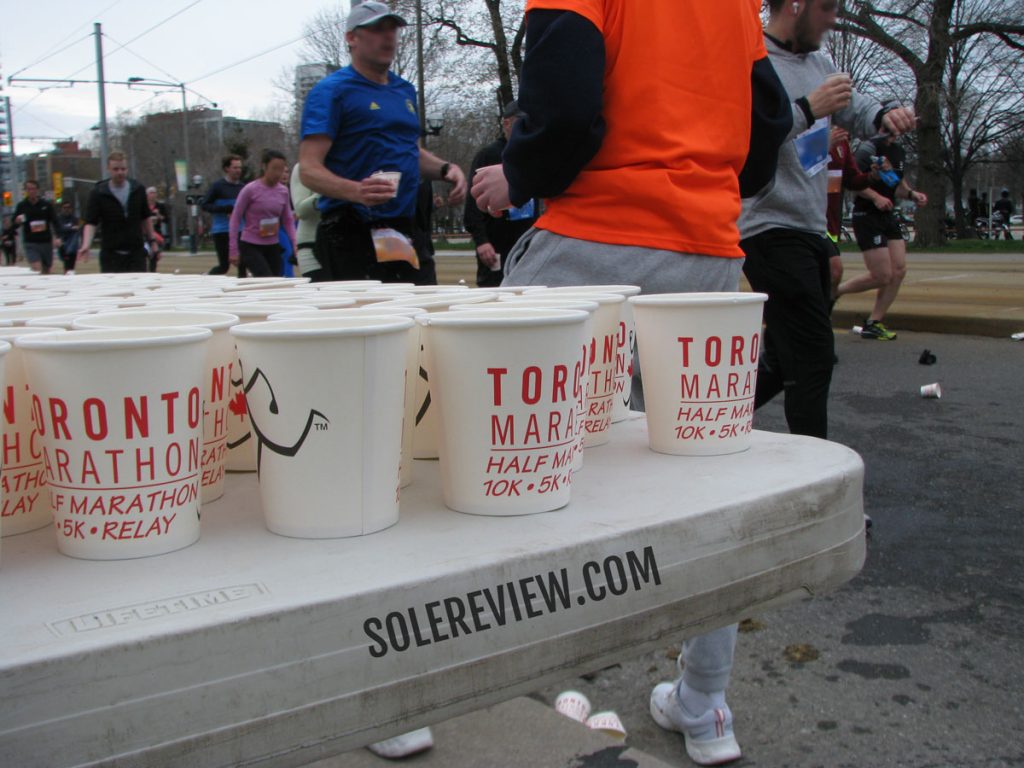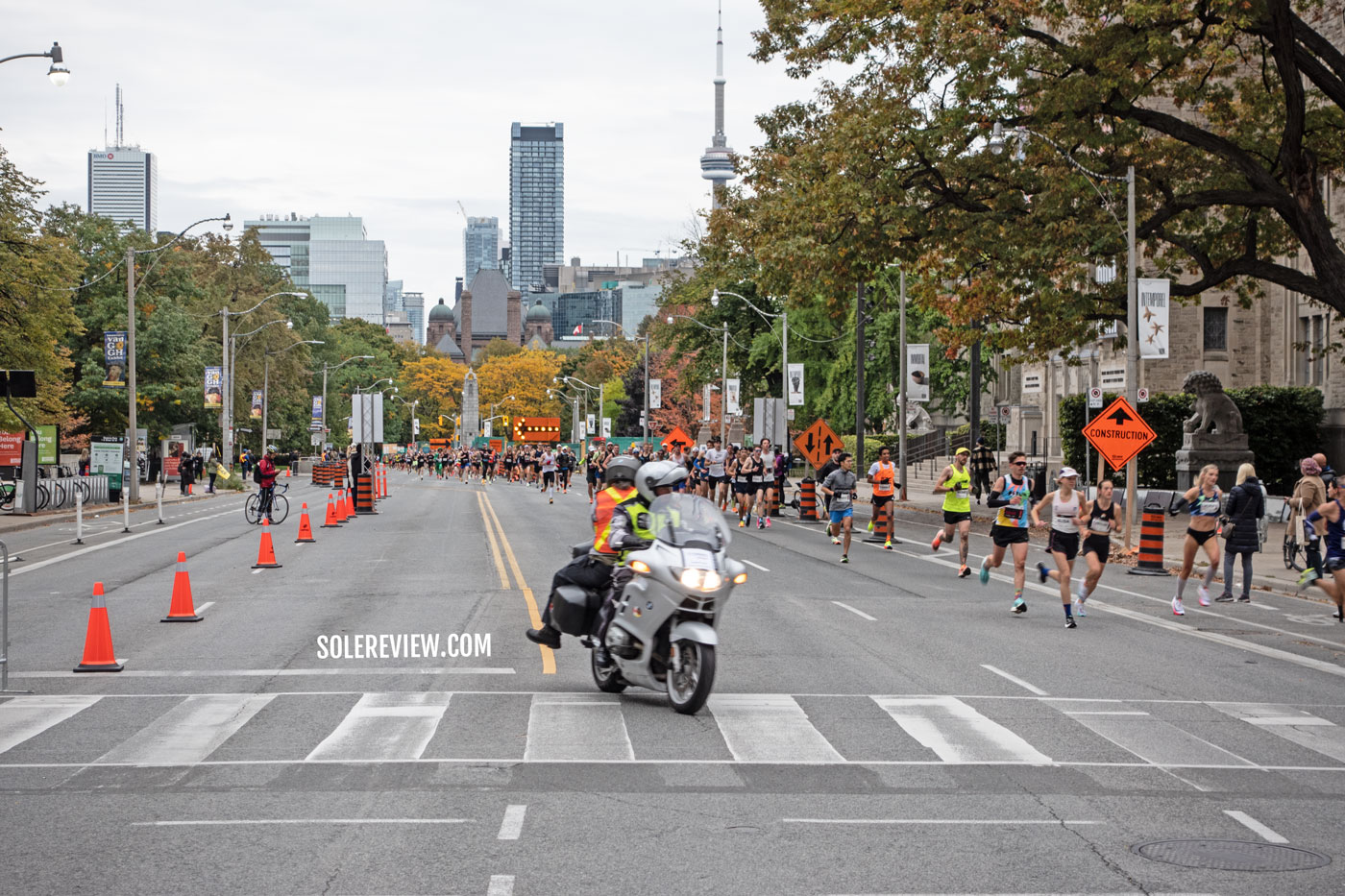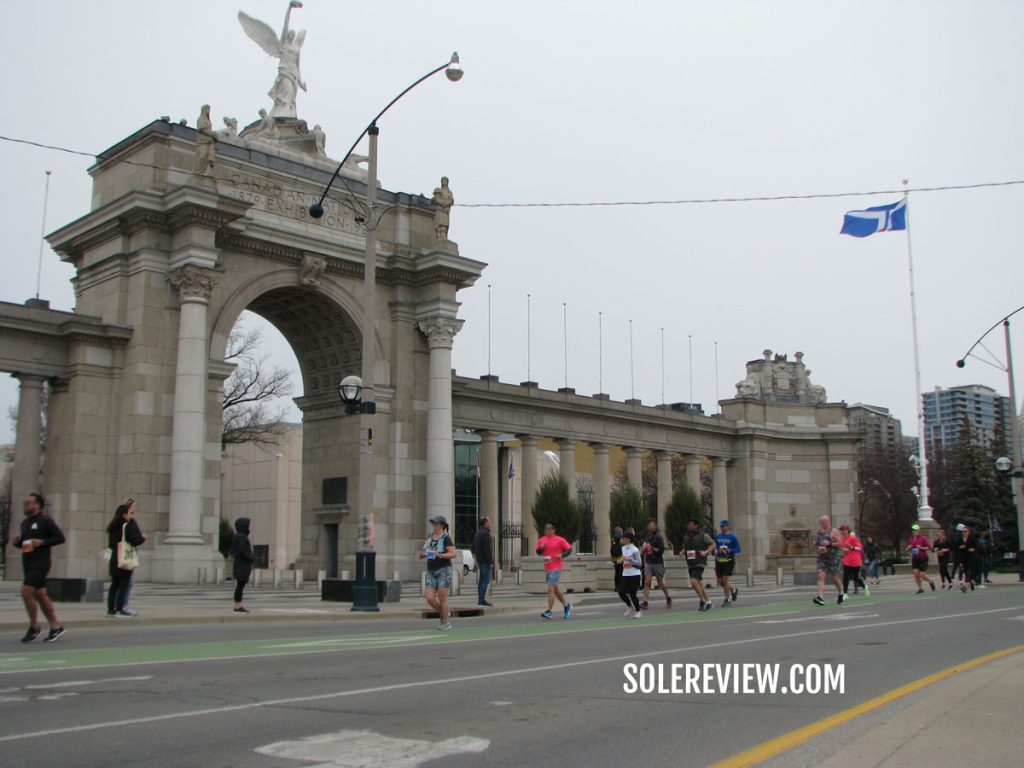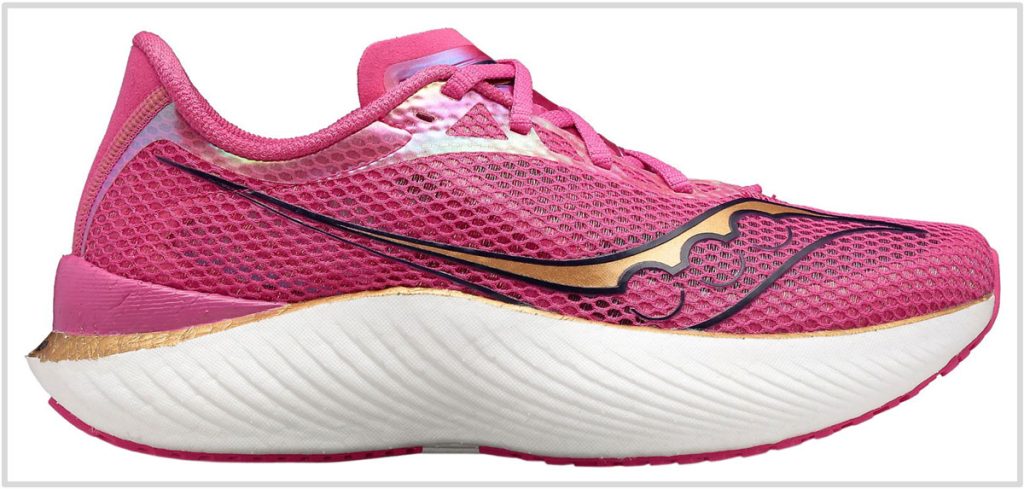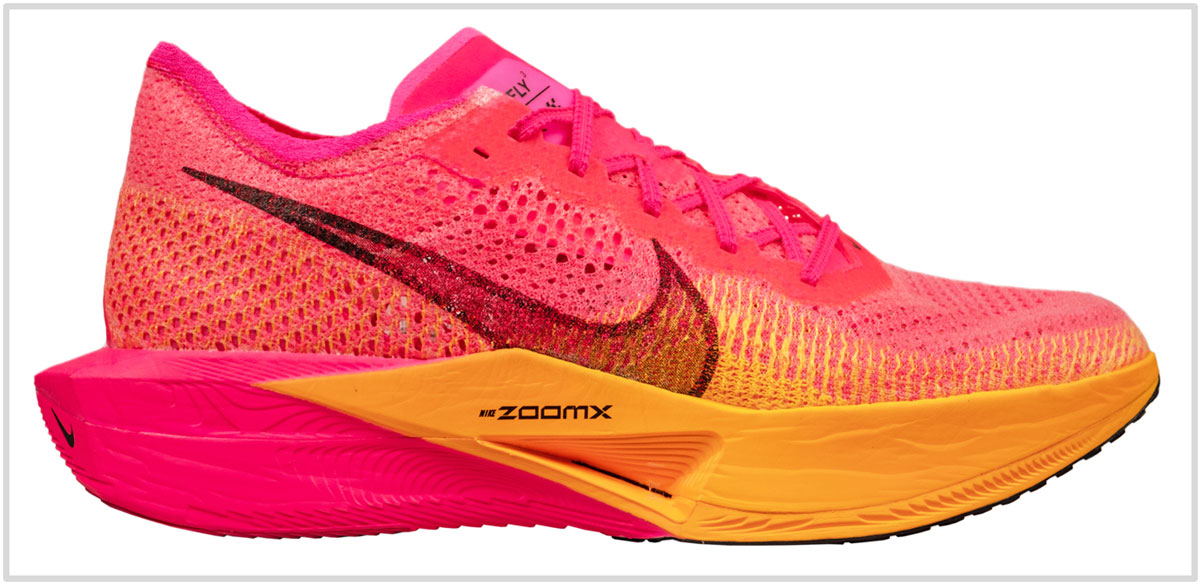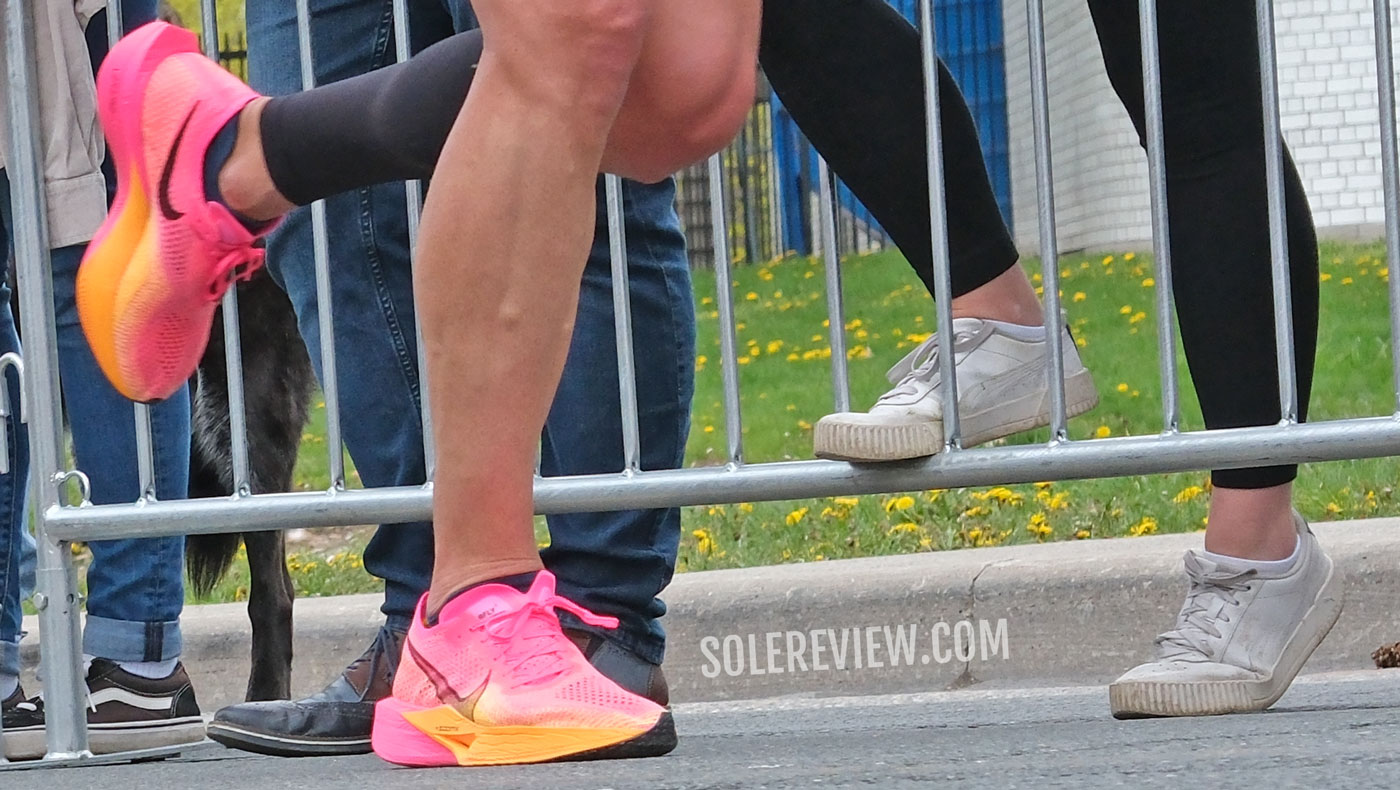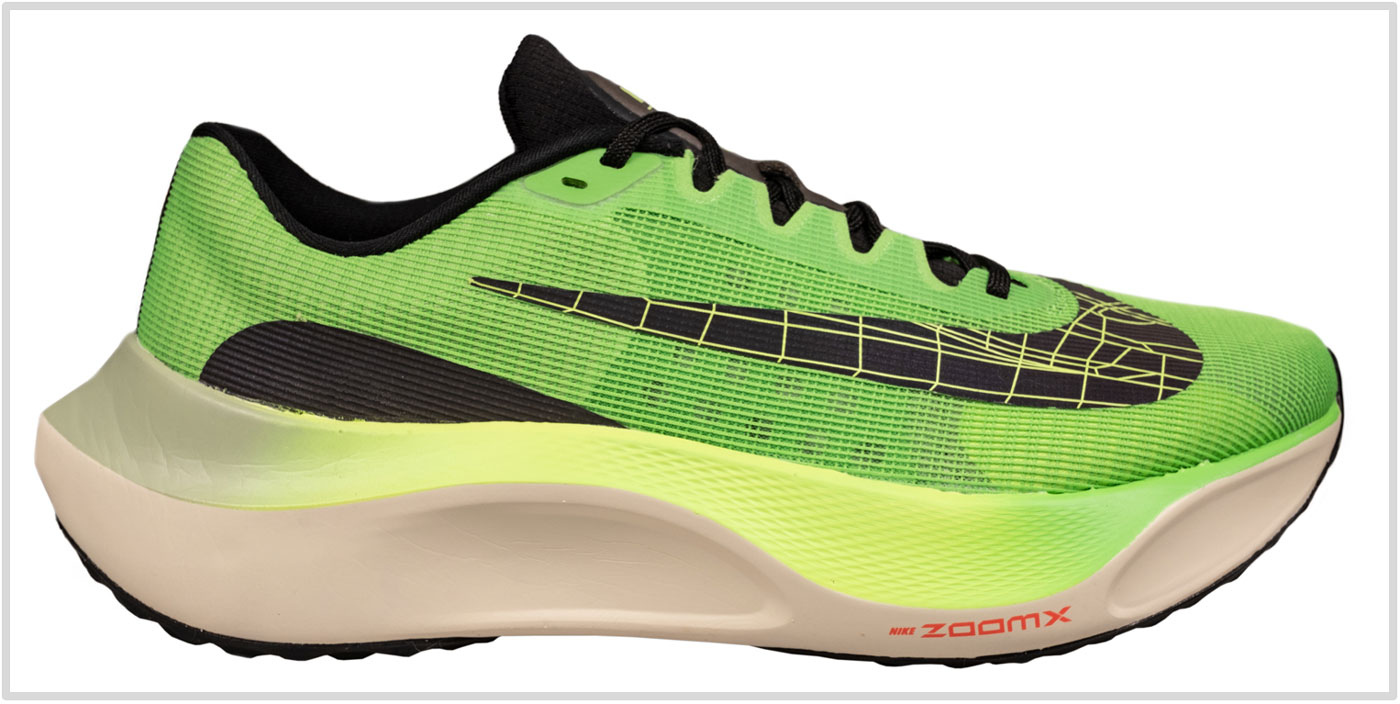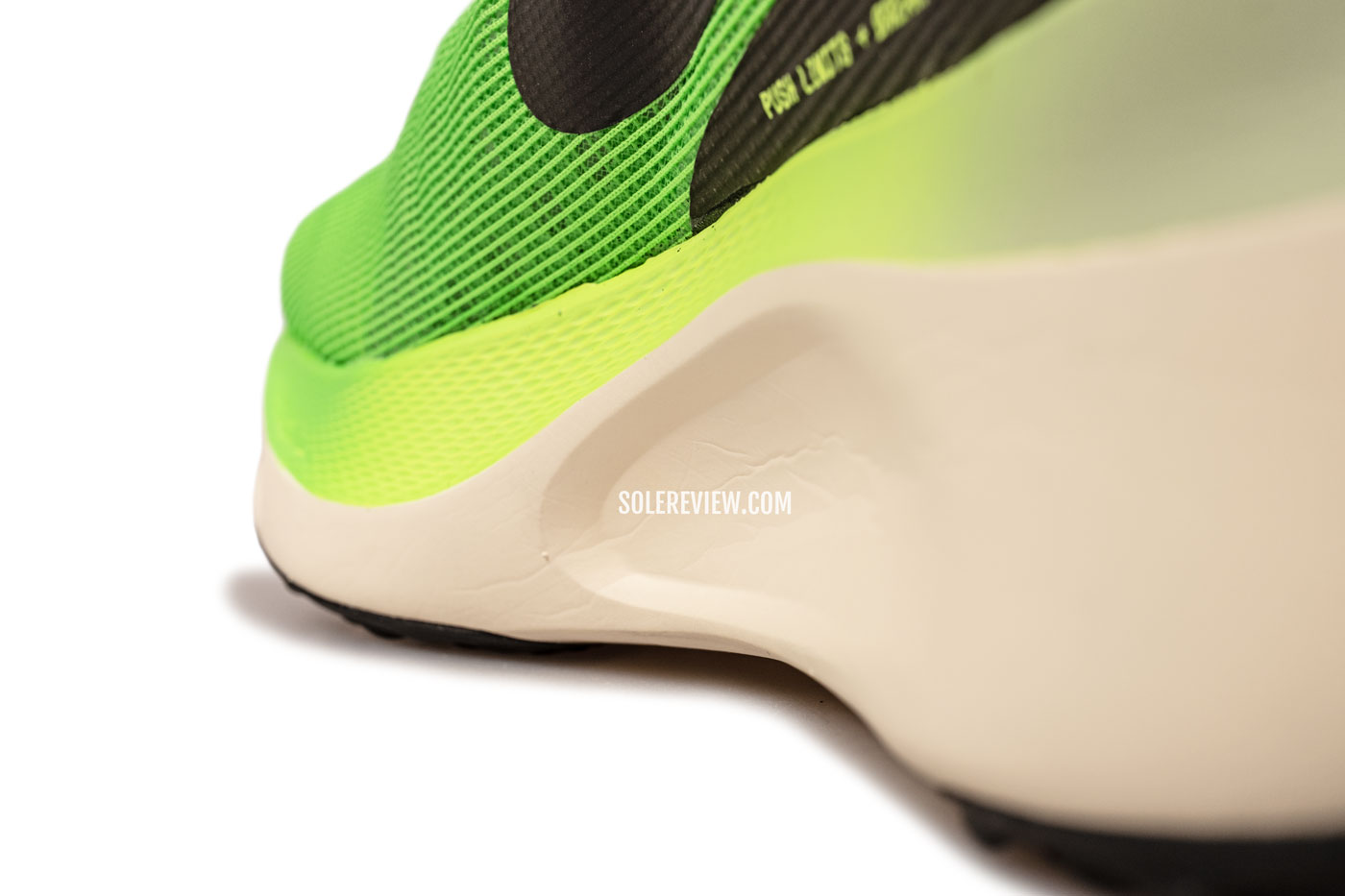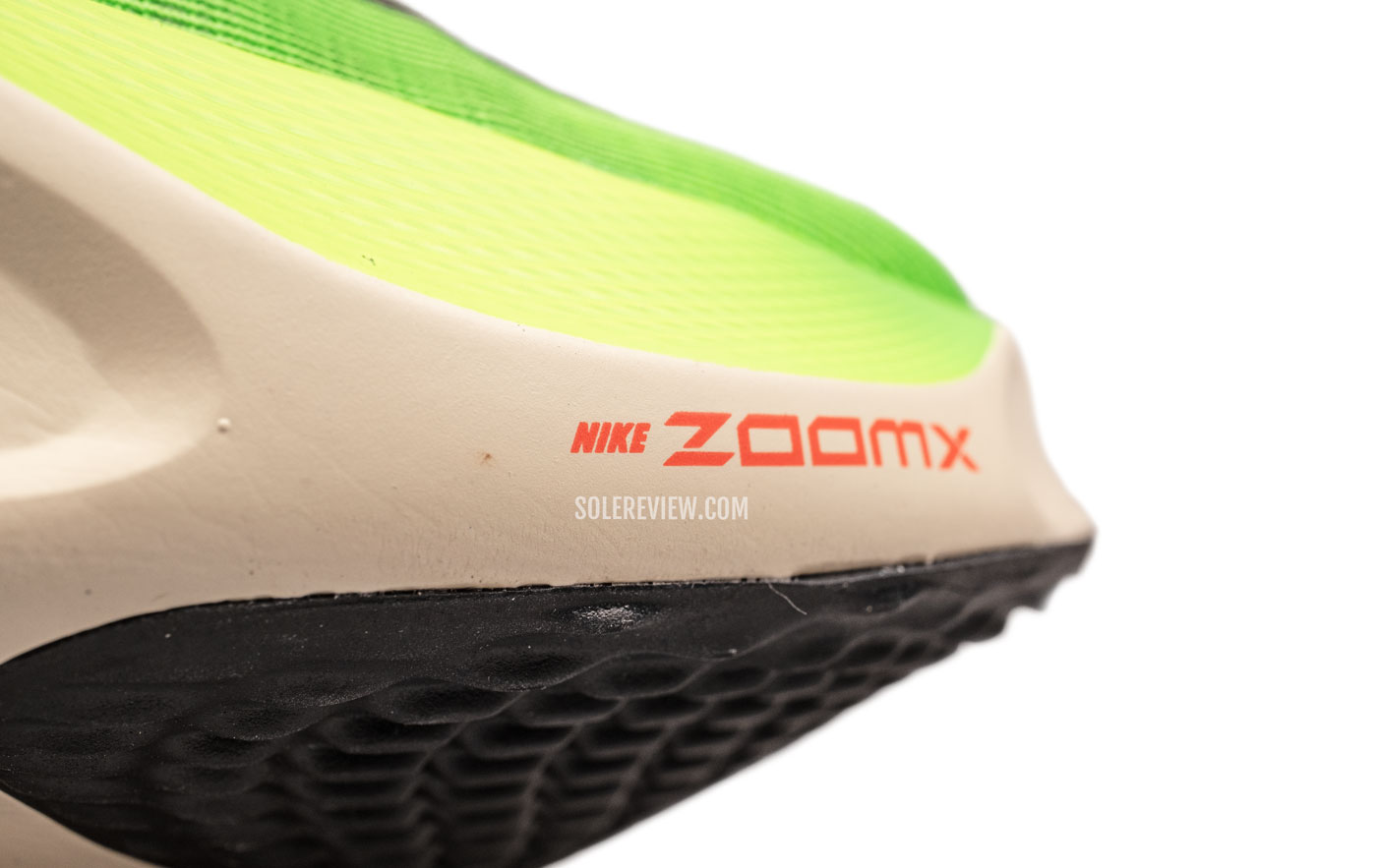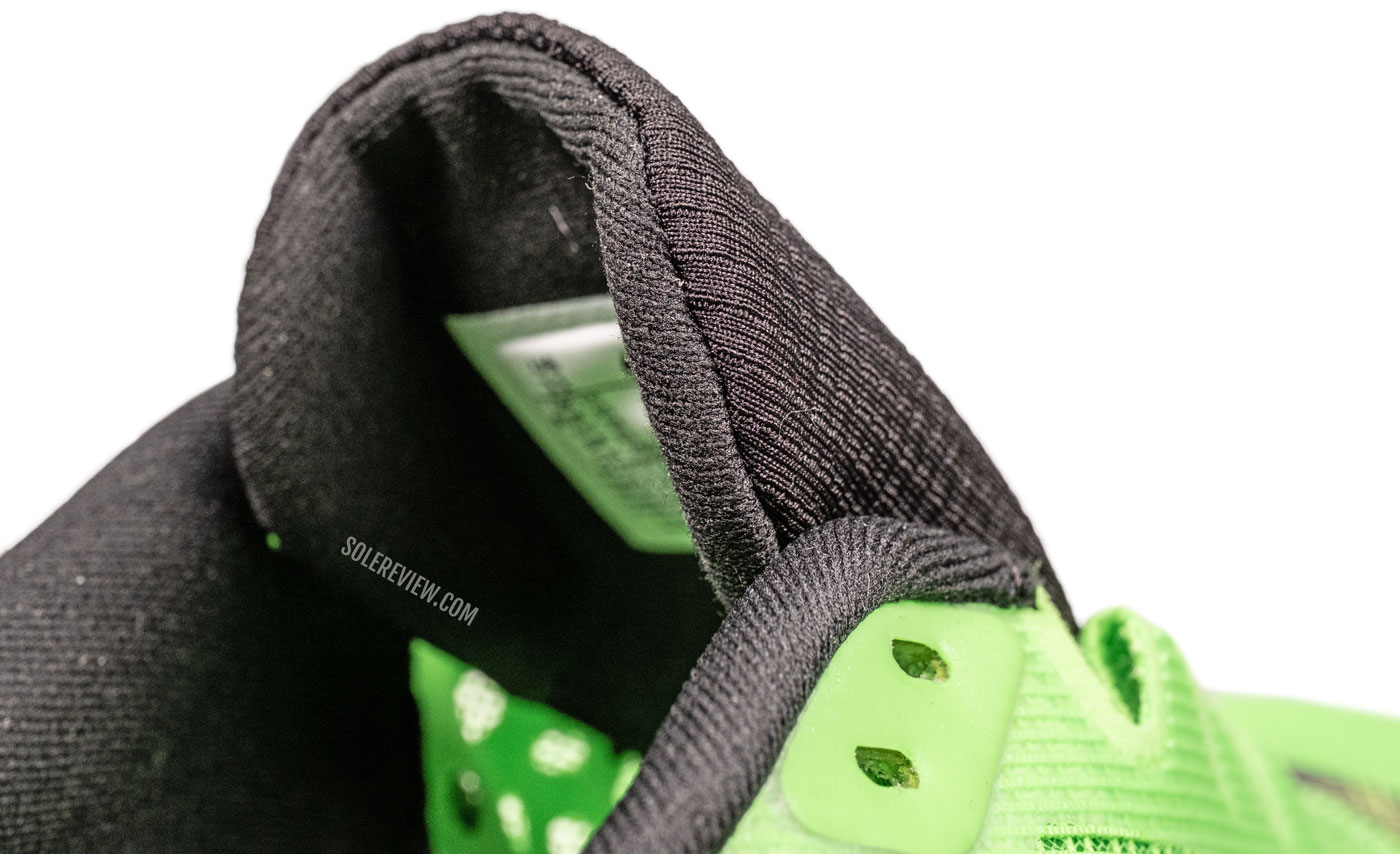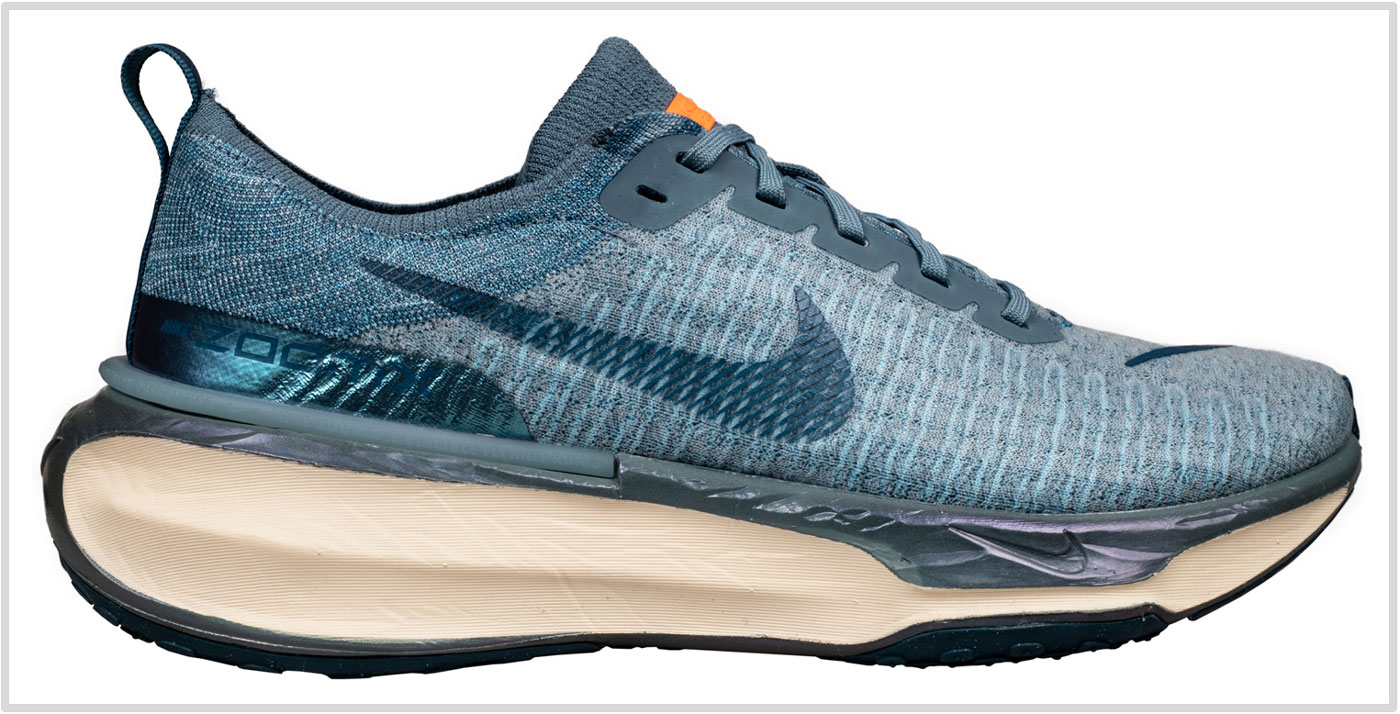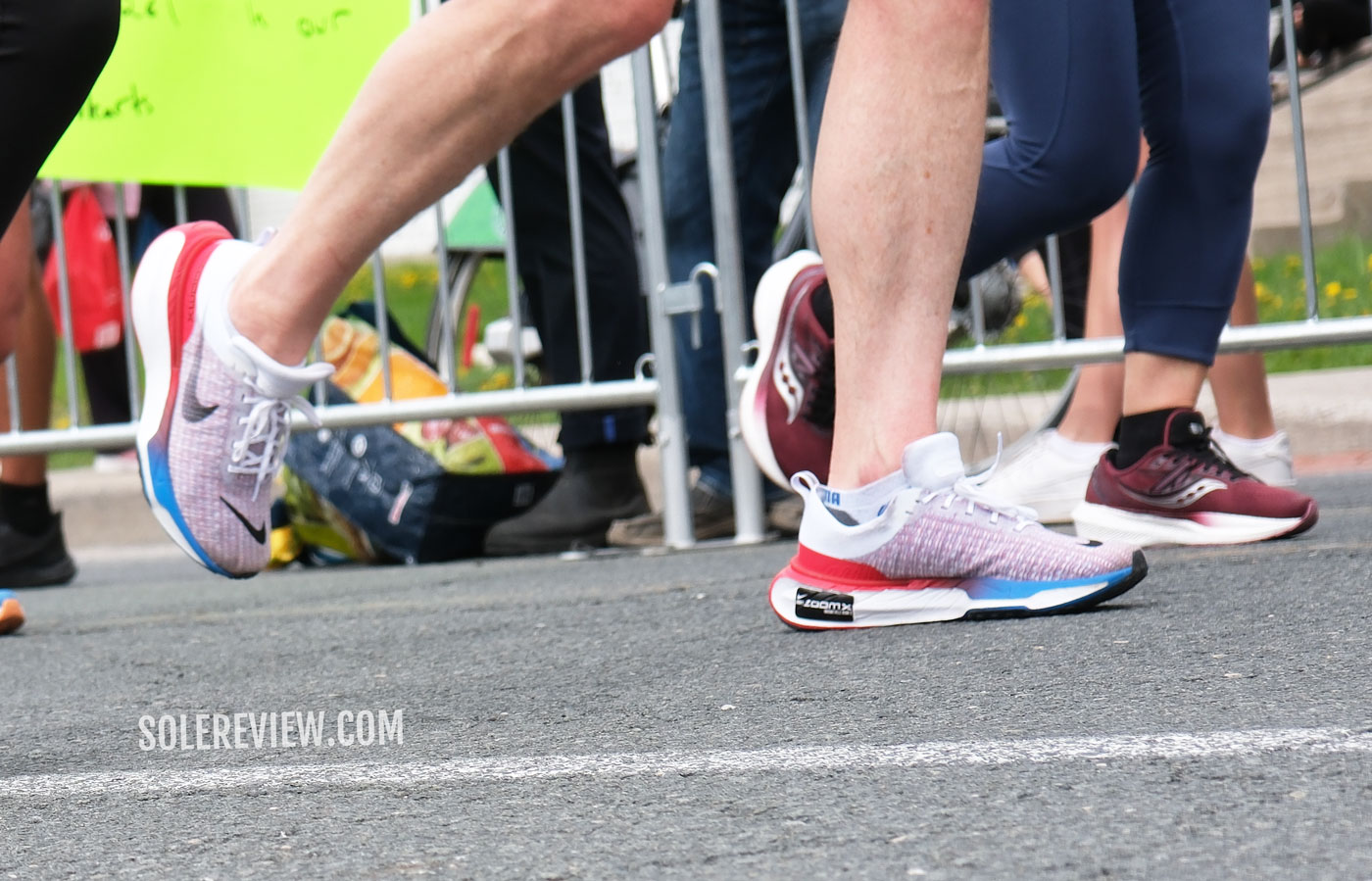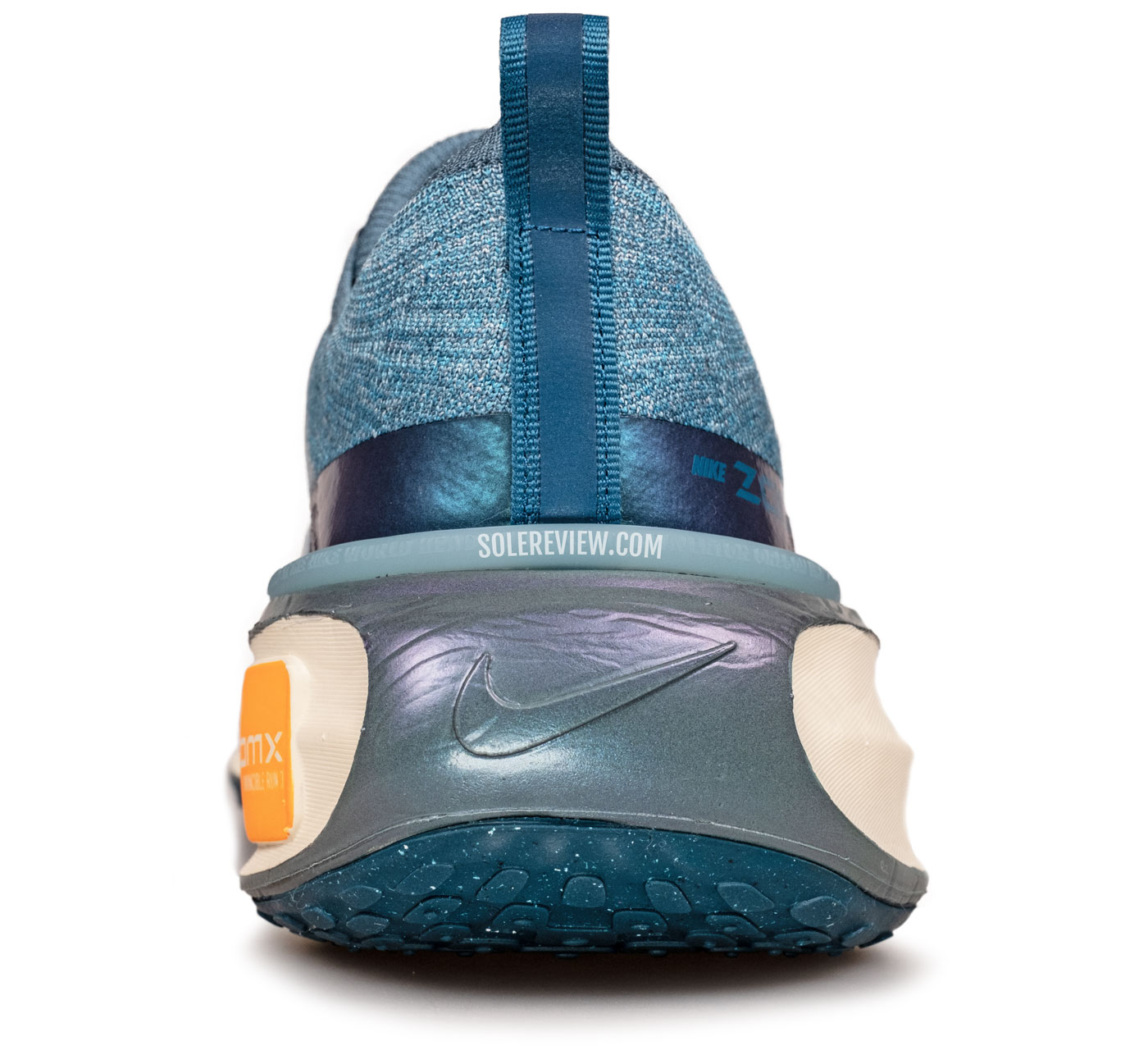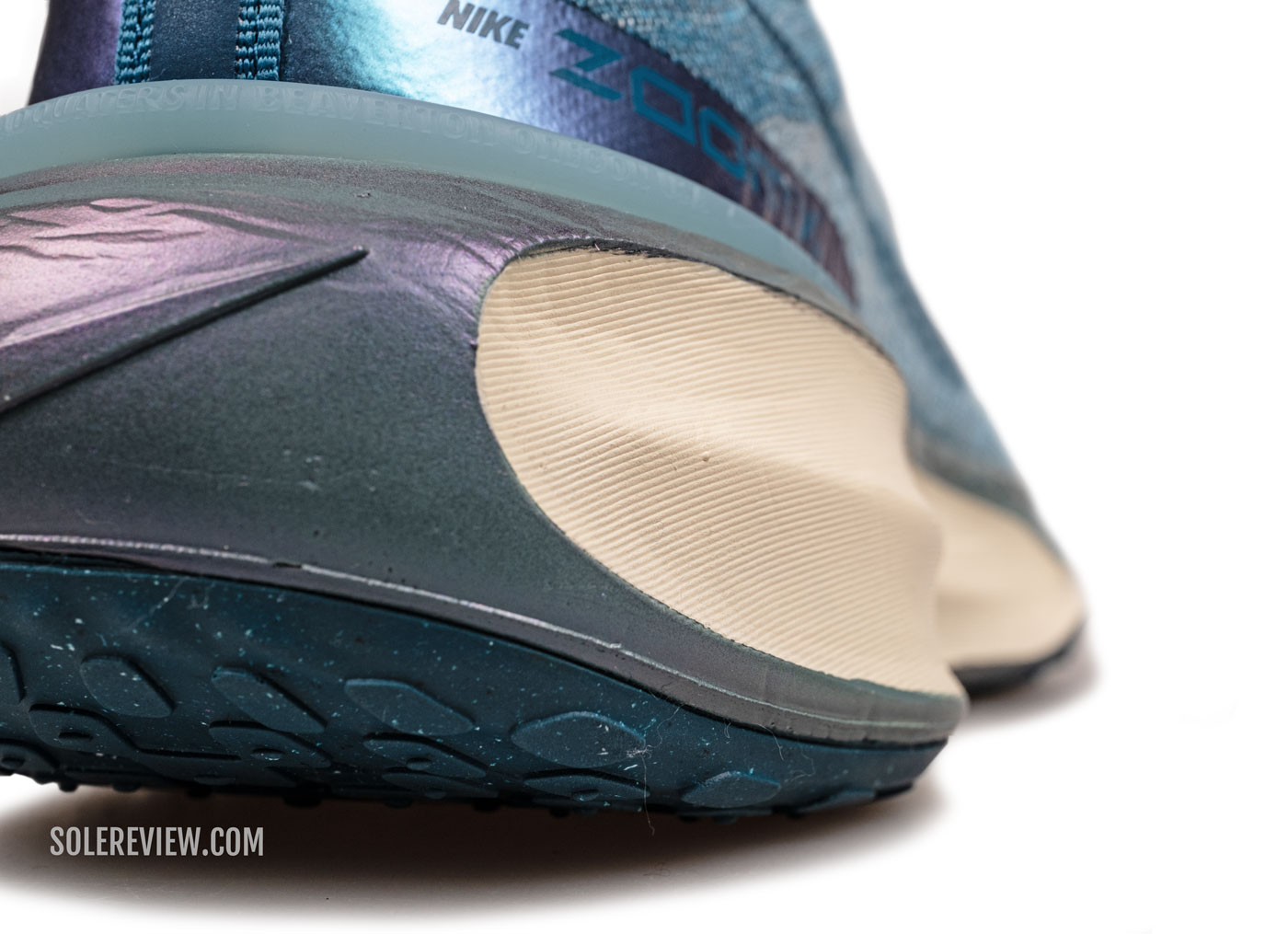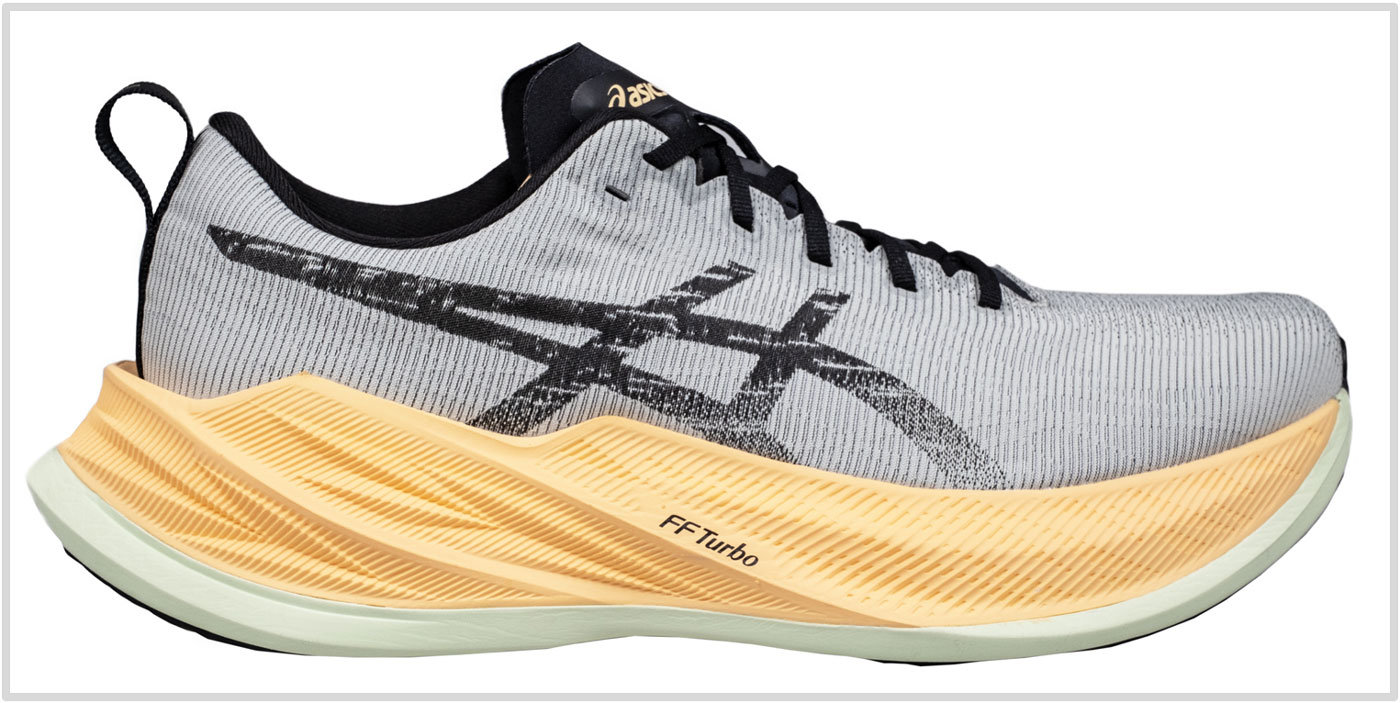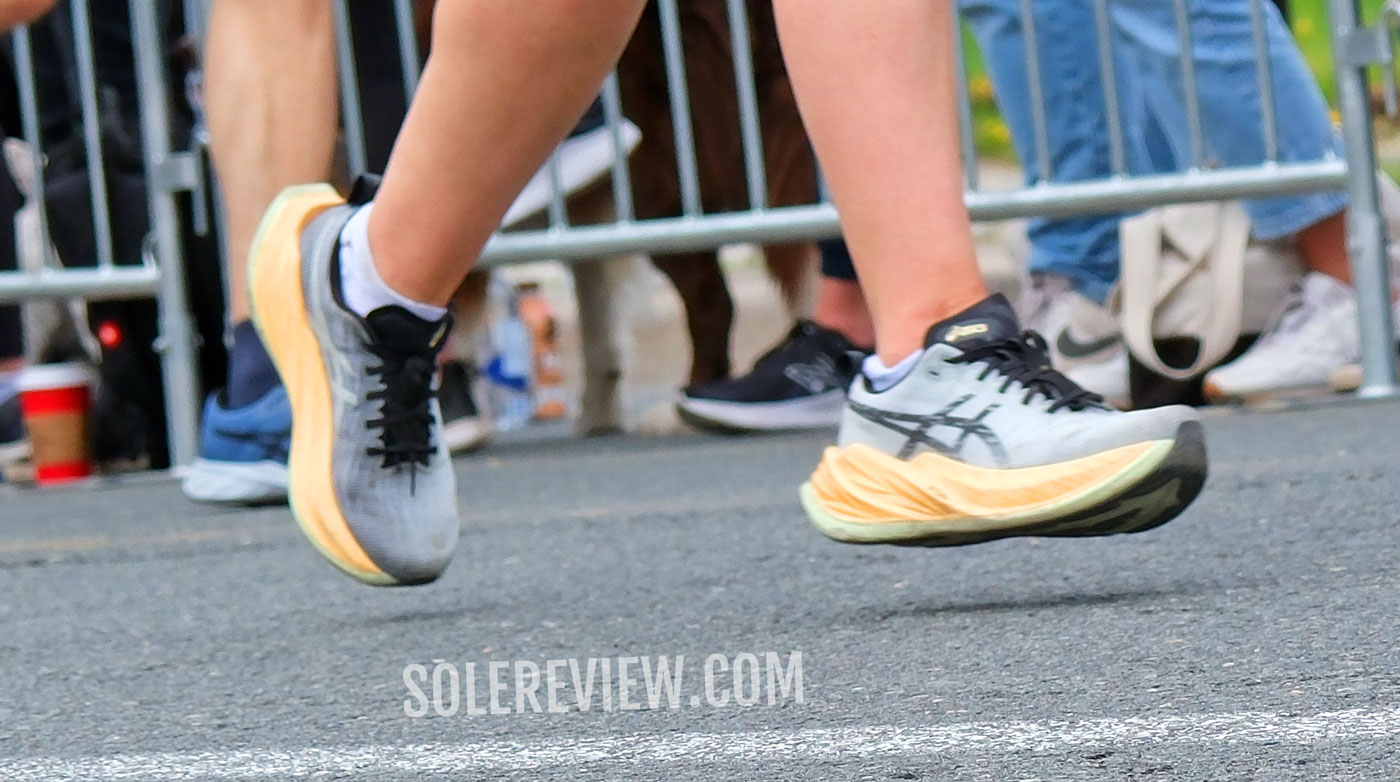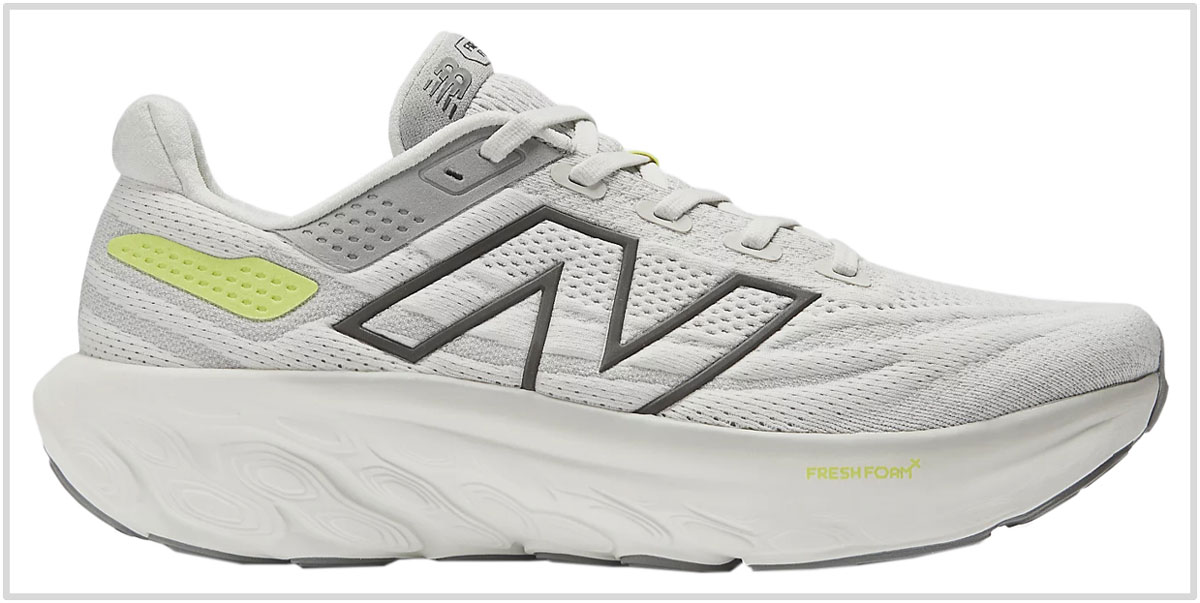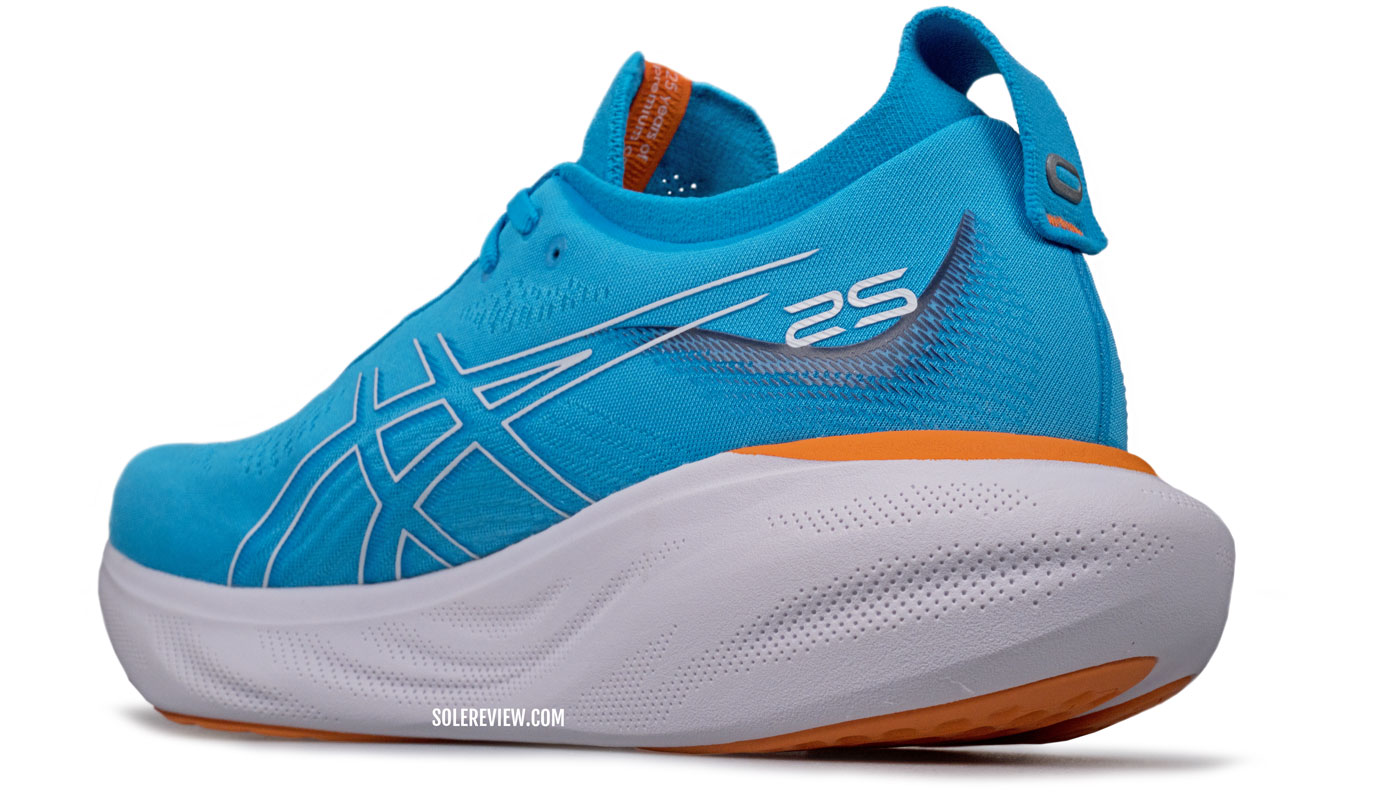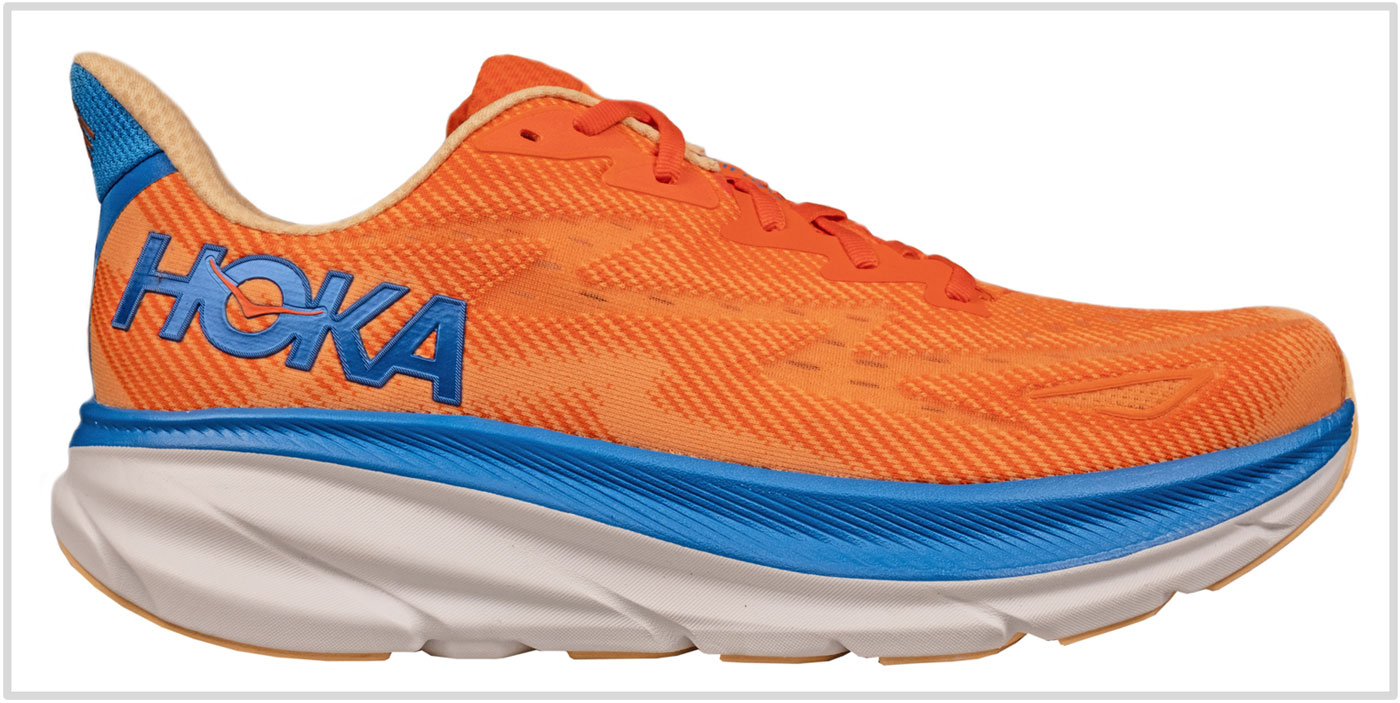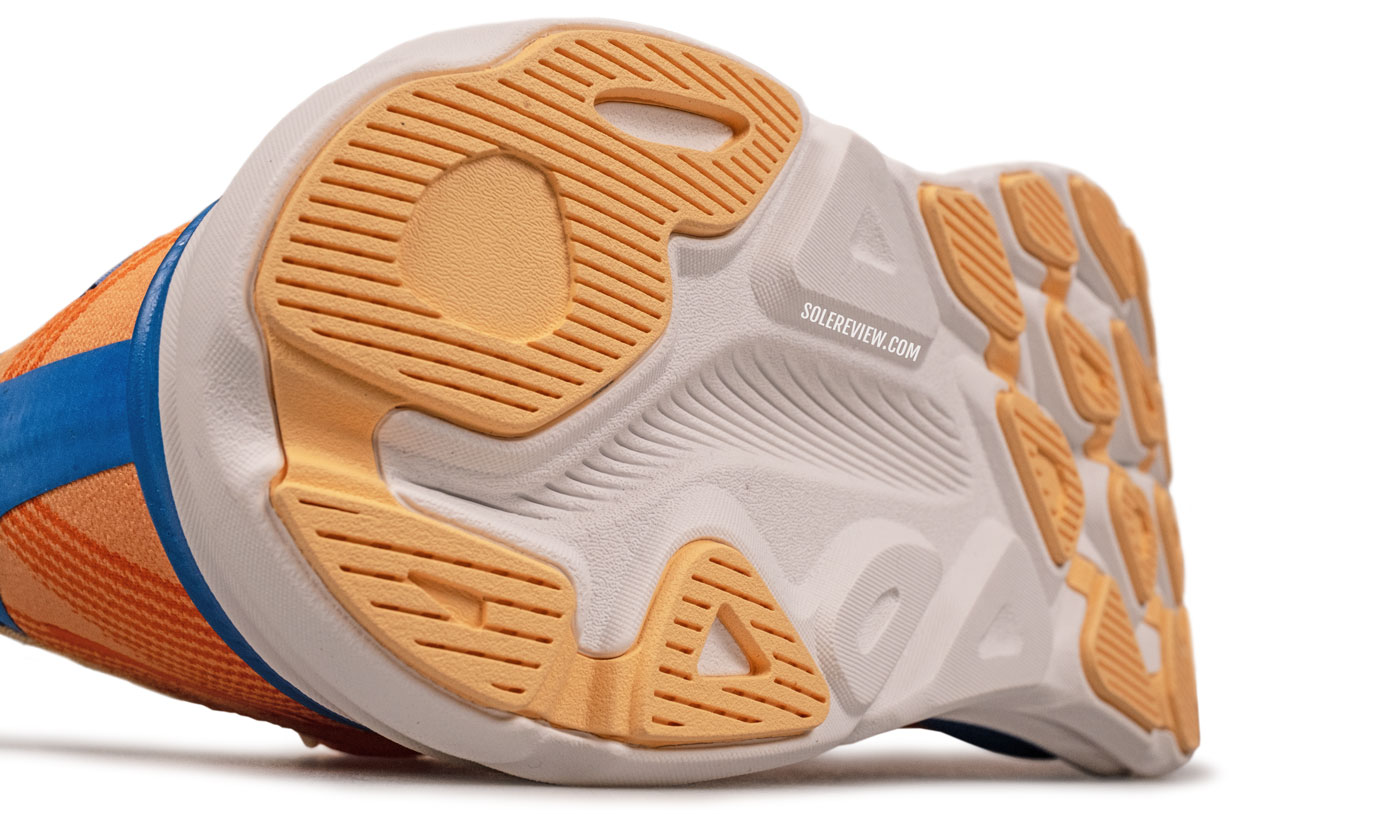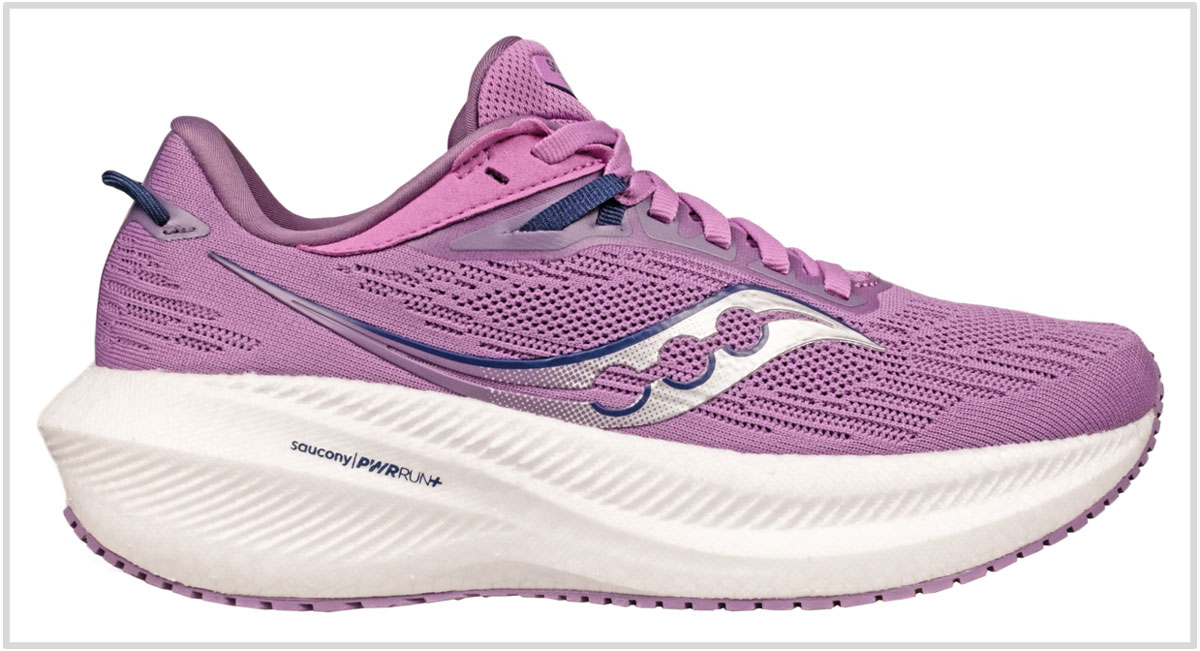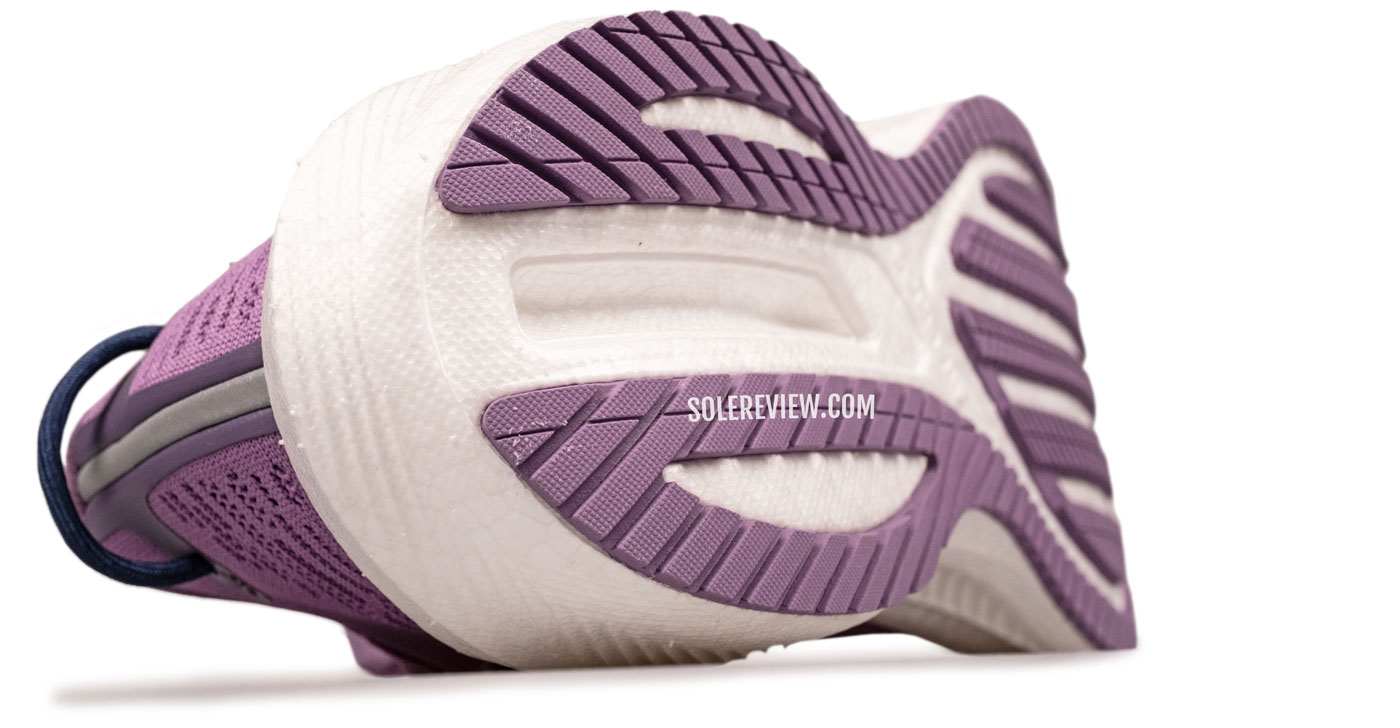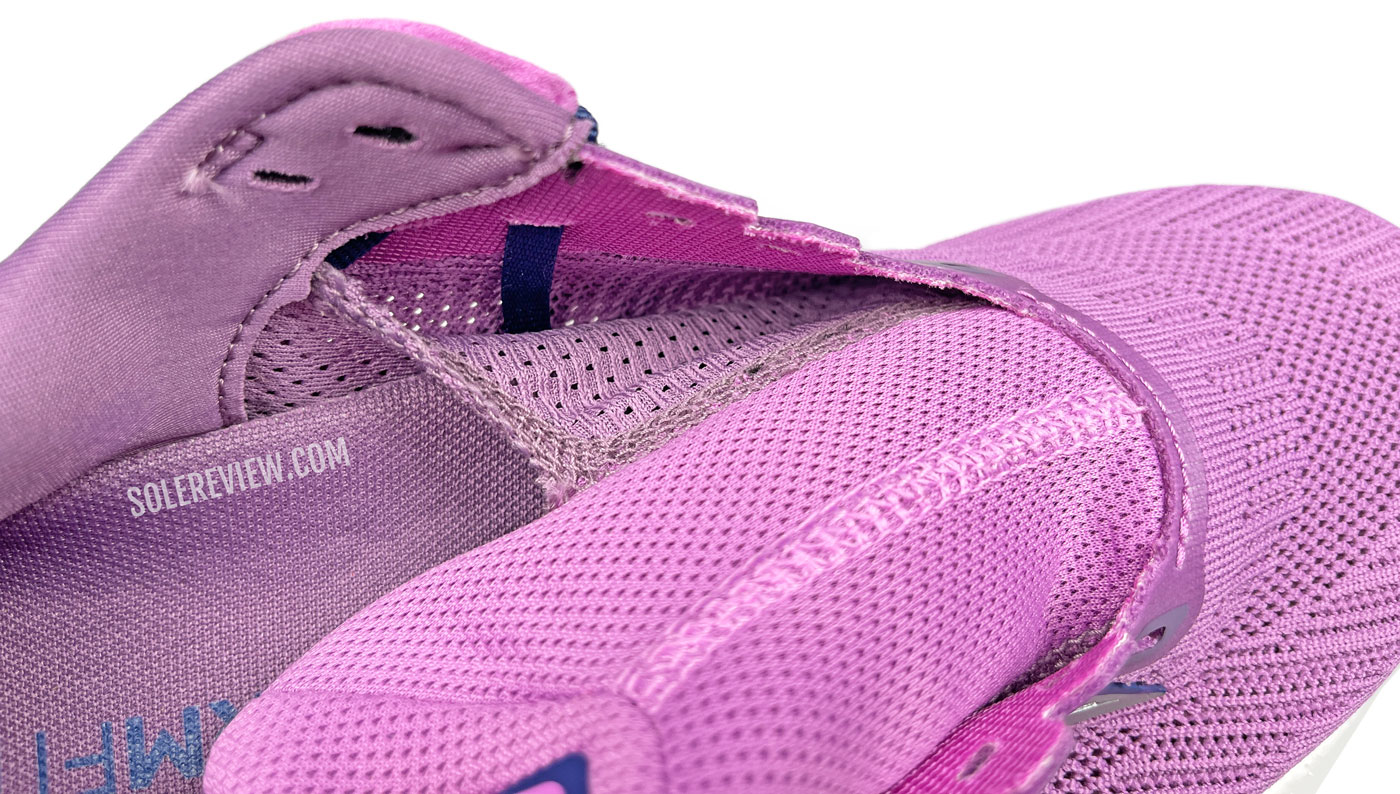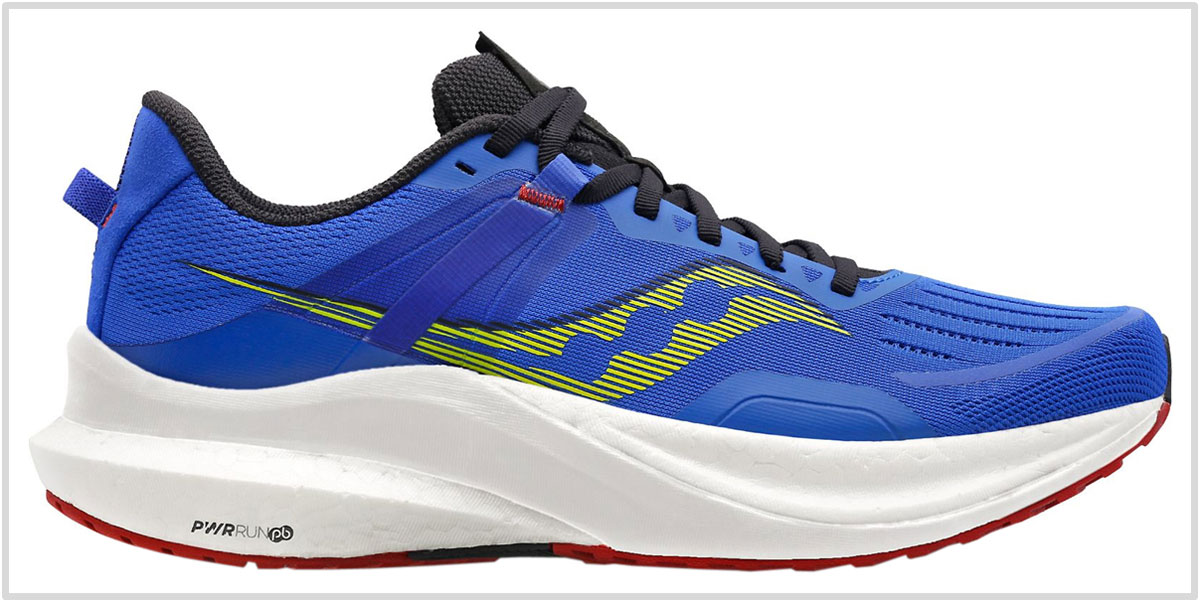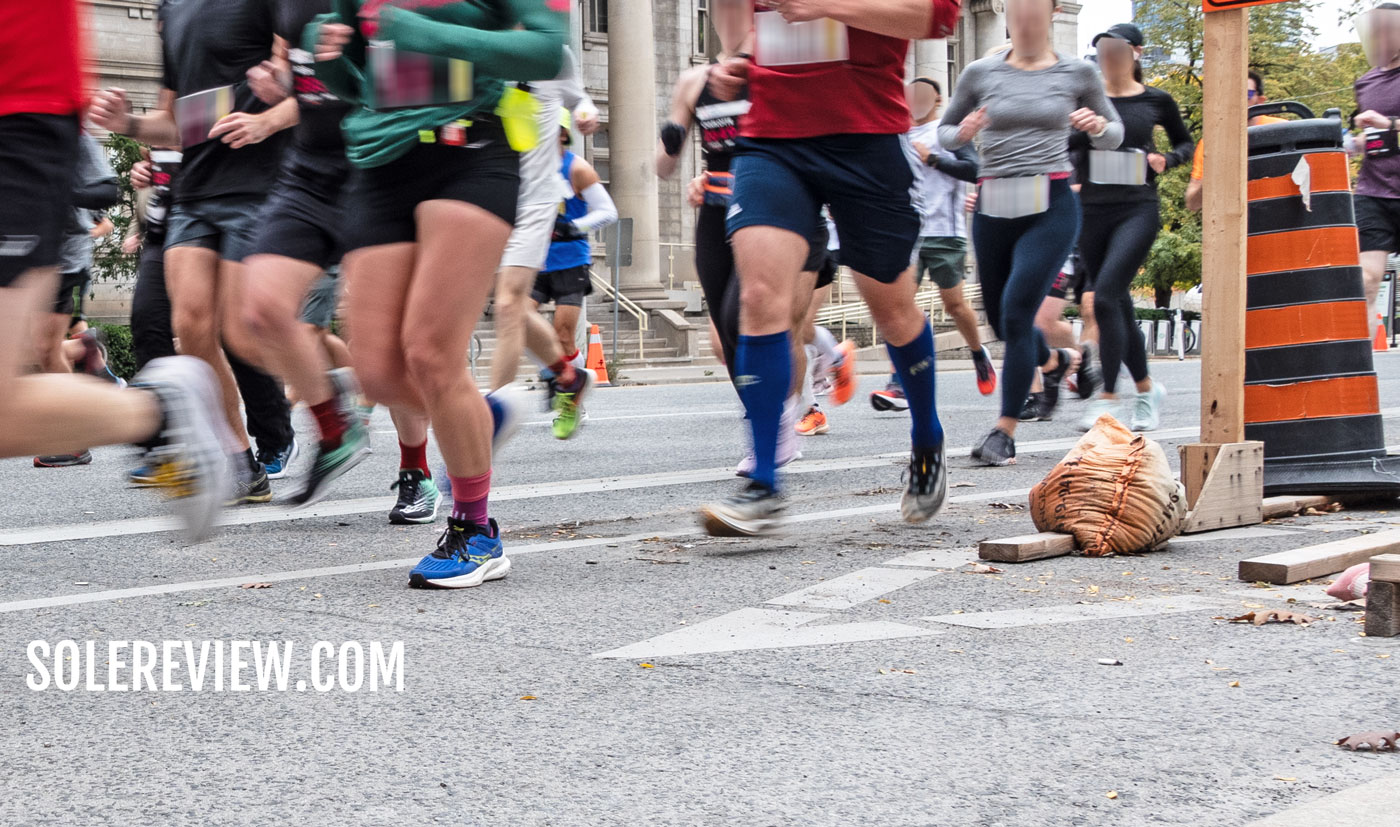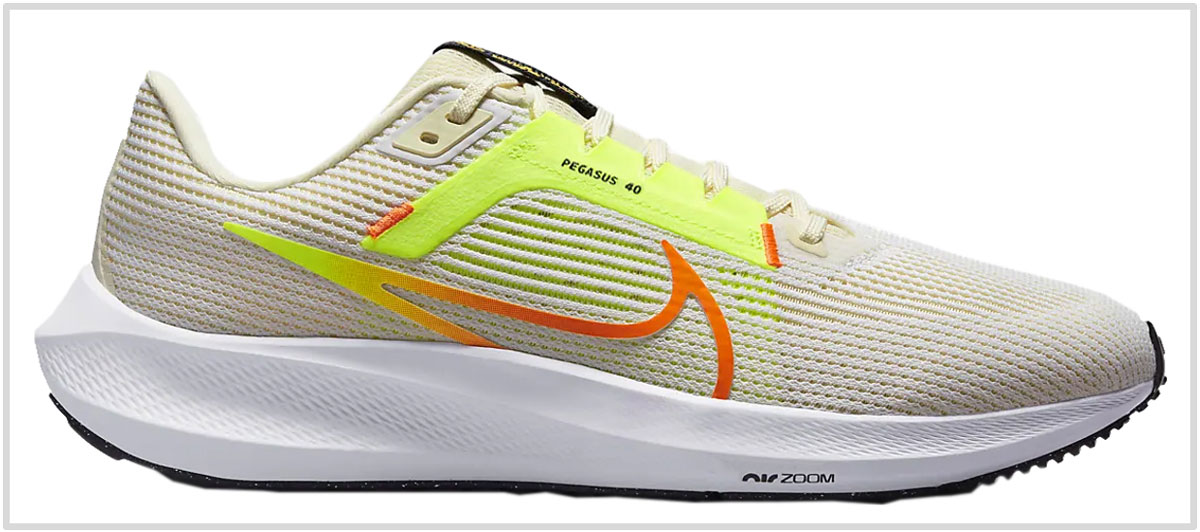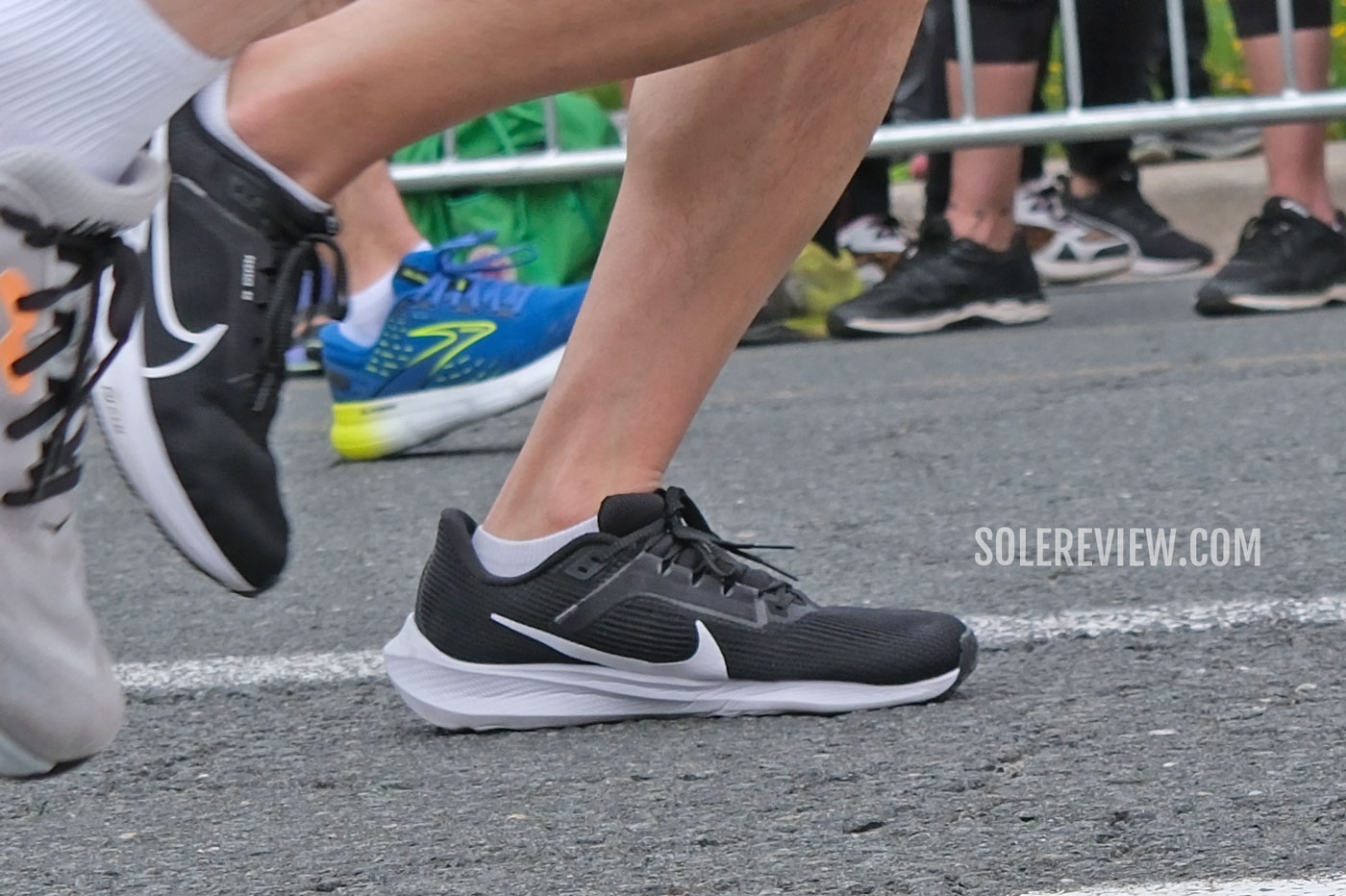This article has been updated with current models for November 2023. The New Balance 1080V12 has been replaced with its updated version. Except for the narrower ‘B’ width, the women’s models are almost identical to men’s.
In this product guide:
- 1. Factors to consider
- 2. Our top sub 4:00 hour pick: Saucony Endorphin Pro 3
- 3. Plated racer for sub-4:00 hour marathons: Nike Vaporfly 3
- 4. Supportive racer for sub-4:00 hour marathons: Nike Zoom Fly 5
- 5. Max-cushioning for over 4:00 hour marathons: Nike Invincible 3
- 6. Max-cushioning for over 3:00 hour marathons: Asics Superblast
- 7. Max-cushioning for 3:30 hour marathons: New Balance 1080V13
- 8. Soft cushioning for over 3:30 hour marathons: Hoka Clifton 9
- 9. Supportive cushioning for over 3:30 hour marathons: Saucony Triumph 21
- 10. Supportive cushioning for over 2:45 hour marathons: Saucony Tempus
- 11. Versatile neutral trainer for over 3:30 hour marathons: Nike Pegasus 40
Carbon-plated racers are a recent development. In the past, elite runners broke marathon PRs in a pair of racing flats that looked like a thin piece of foam glued to a mesh upper.
So if running shoes make no difference at all, then what’s the point of this guide?
That said, if you are a non-elite athlete running a marathon in a pair of flats, wouldn’t you like more cushioning after mile 10? The kind of running shoe that goes easy on your feet? And an upper with enough room for your toes instead of squeezing them in a vice-like grip?
And unless you’re running on an exceptionally scenic route, marathons can also get boring after an hour or two. The last thing you need is a shoe that’s unexciting to run in.
Even if you’ve trained religiously for over six months before running a marathon, every bit helps – even running shoes.
While many experienced runners have no problem running longer distances in flats, most of us will appreciate the extra comfort.
The racing shoe landscape has also evolved. A decade ago, a road racer meant a racing flat – a running shoe with minimal cushioning.
In 2023, if a marathon shoe doesn’t have a plate inside a springy midsole, then it’s likely to end up on a close-out sale.
So if given a choice, why wear uncomfortable flats?
Given the context, this guide focuses on cushioned running shoes. If you prefer flats or similar road racers, try the shoes from our guides for 5K and 10K races.
If this guide was compiled in 2014, it would have looked completely different. Except for a few Hokas, there weren’t many max-cushioning shoes available. Most midsole foams were also limited to e-TPU and EVA variants.
Back then, we would have featured cushioned trainers such as the adidas Supernova, Nike Pegasus, and the Saucony Ride. These models have always been dependable, do-it-all shoes – something that doesn’t change in 2023 either. As you scroll down this page, you’ll come across familiar names like the Nike Pegasus 40 and Saucony Triumph 21.
This product guide includes several shoes with midsole plates. Our top pick is the Saucony Endorphin Pro 3 due to its superlative ride character and upper fit.
Additionally, the Nike Vaporfly 3 is here too, as well as the Nike Zoom Fly 5 – just in case you wanted a more supportive ride than the Pro 3.

The New Balance SC Elite is an excellent marathon racer, but it’s hard to fit all models on a single guide.
The New Balance SC Elite V3 is nice too, but it doesn’t feature on this guide.
While it’s incredibly lightweight and comfortable, the plate design doesn’t result in a springboard-like effect; it just guides the transitions, that’s all. But of all the plated racers we’ve tested, the unique midsole and upper make the SC Elite V3 the most fun of them all.
The adios Pro 3 is also a decent choice, but doesn’t offer a good enough reason to buy it over the Vaporfly and Endorphin twins. The Saucony Endorphin Elite is also a great pick, but we’re on the fence about its pricing.
Not everyone is chasing a personal best, and sometimes the kind of shoe you want for a 5-hour marathon is the Invincible 3. Its ZoomX midsole offers almost a bottomless reservoir of cushioning comfort for long races.
Previously, cushioned support running shoes were missing from this list.
That gap is filled with the Saucony Tempus, a running shoe that derives its cushioned-support character from a PEBA midsole that’s stabilized with a firmer EVA rim. This relatively lightweight shoe packs a high cushioning-to-weight ratio, and works well for most use cases.
Our top sub-4:00 hour pick: Saucony Endorphin Pro 3
The Saucony Endorphin Pro 3 may be similar to the Speed 3, but it has several upgrades that make it an excellent marathon shoe.
It’s softer and over 10% lighter (7.2 ounces) than the Speed 3, and the generously vented upper keeps the feet cool during a marathon. The minimally constructed upper secures the foot as a racer should, but without compromising interior comfort.
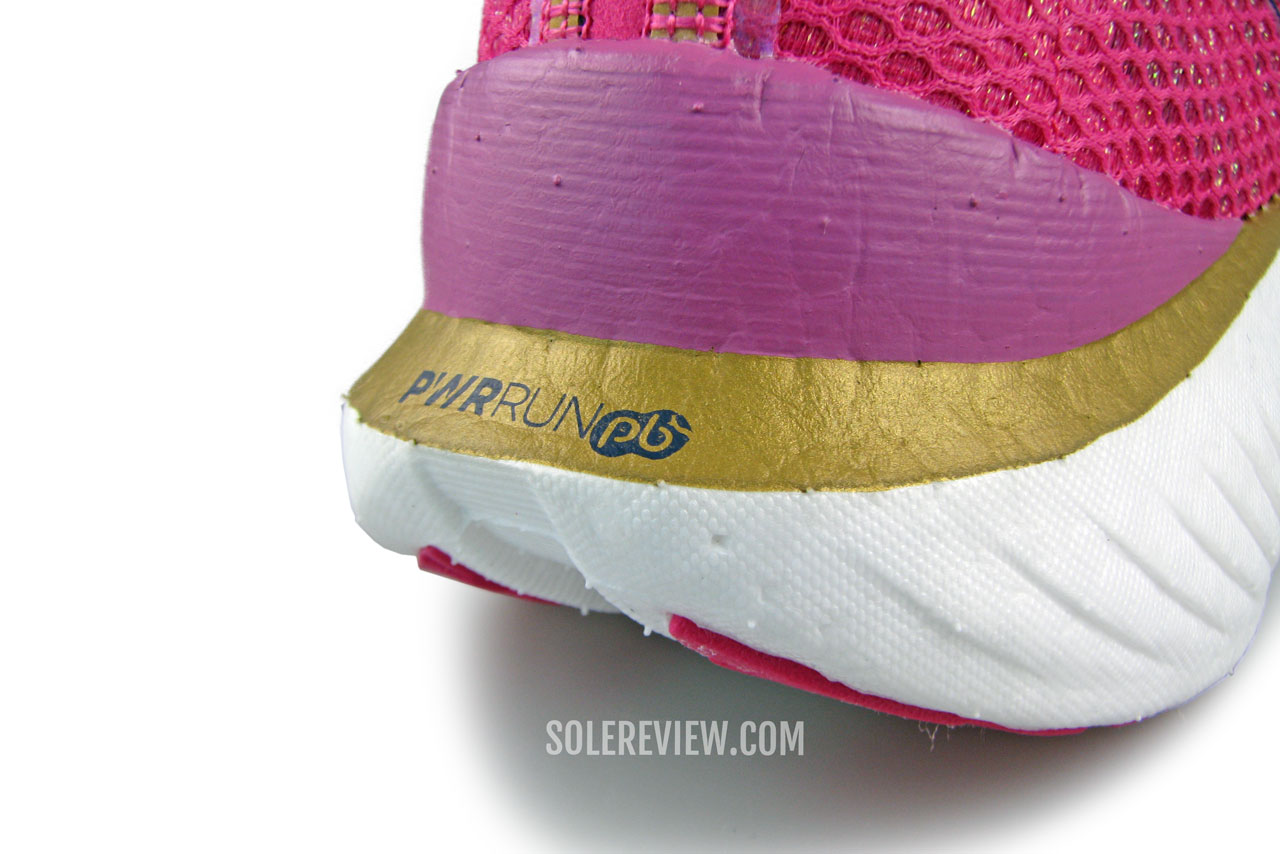
The Pwrrub PB midsole of the Endorphin Pro 3 creates a soft and responsive underfoot feel. The Carbon plate does the rest.
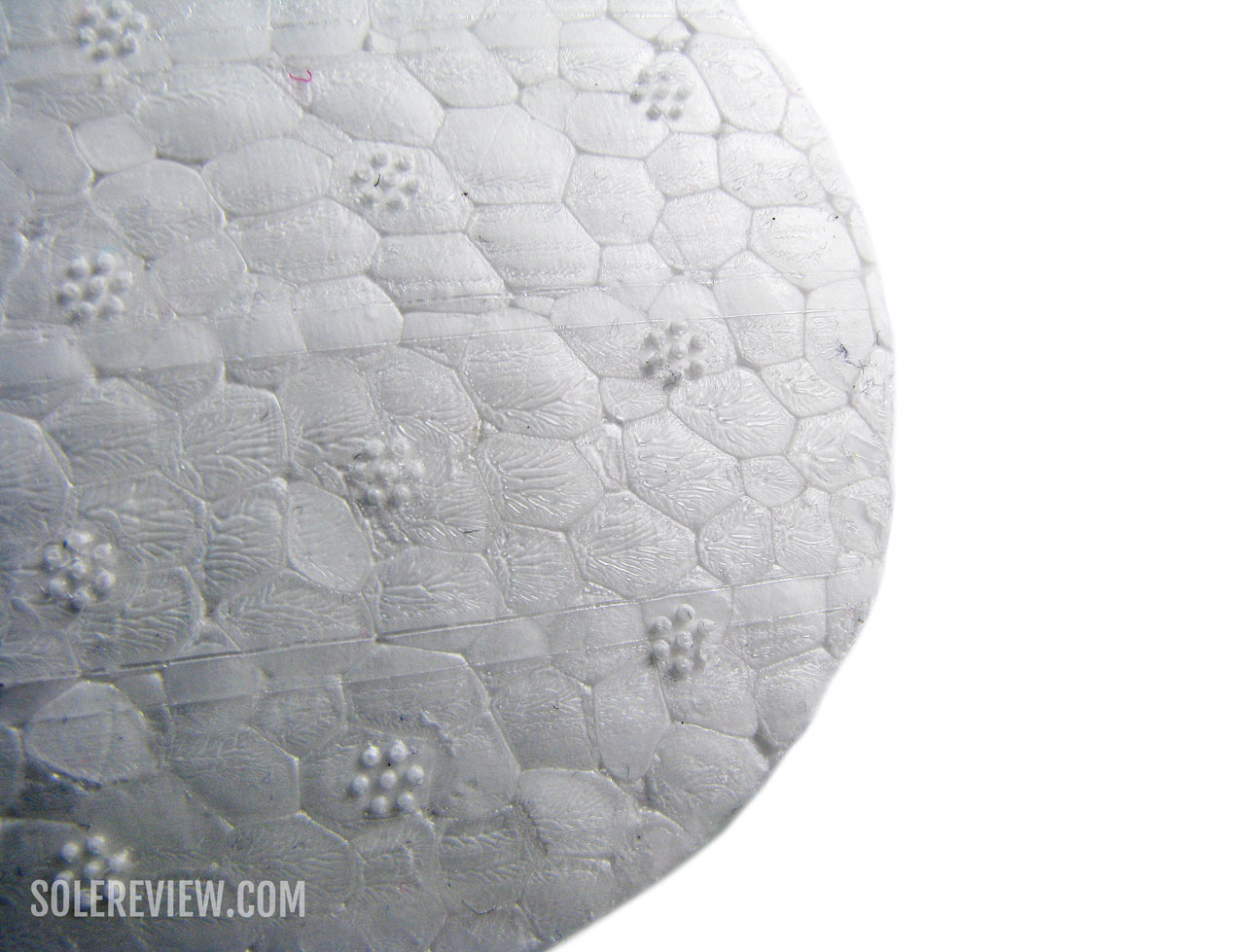
The Pro 3 has a Pwrrun+ footbed; the Speed 3 has the EVA-based kind.
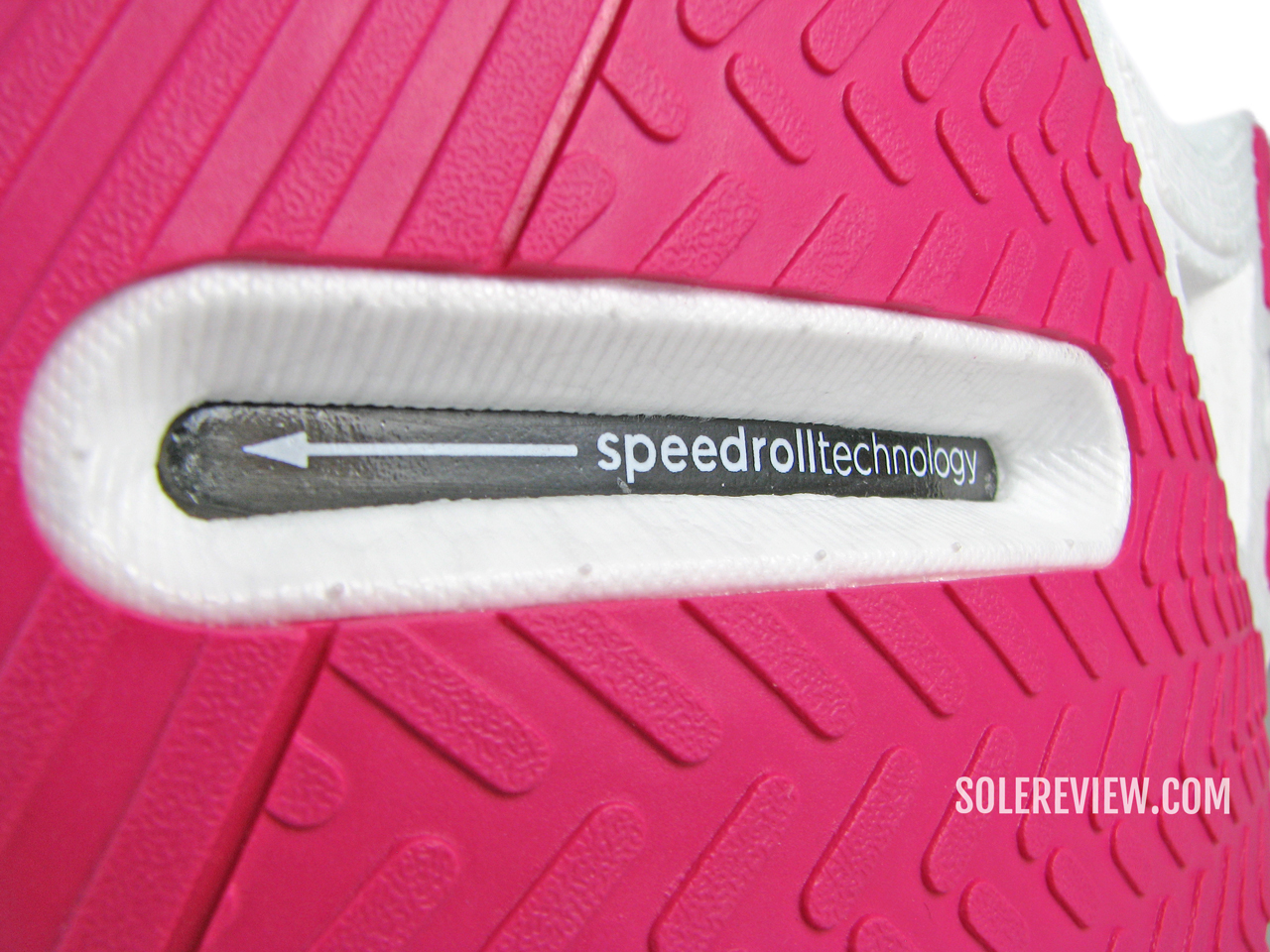
While the one-piece Pwrrun PB midsole makes the ride softer, the Pro 3 has another feature that the Speed 3 does not – an insole made of Pwrrun+ foam.
The windows exposing the Carbon plate also reduce bulk and help with the cushioning.
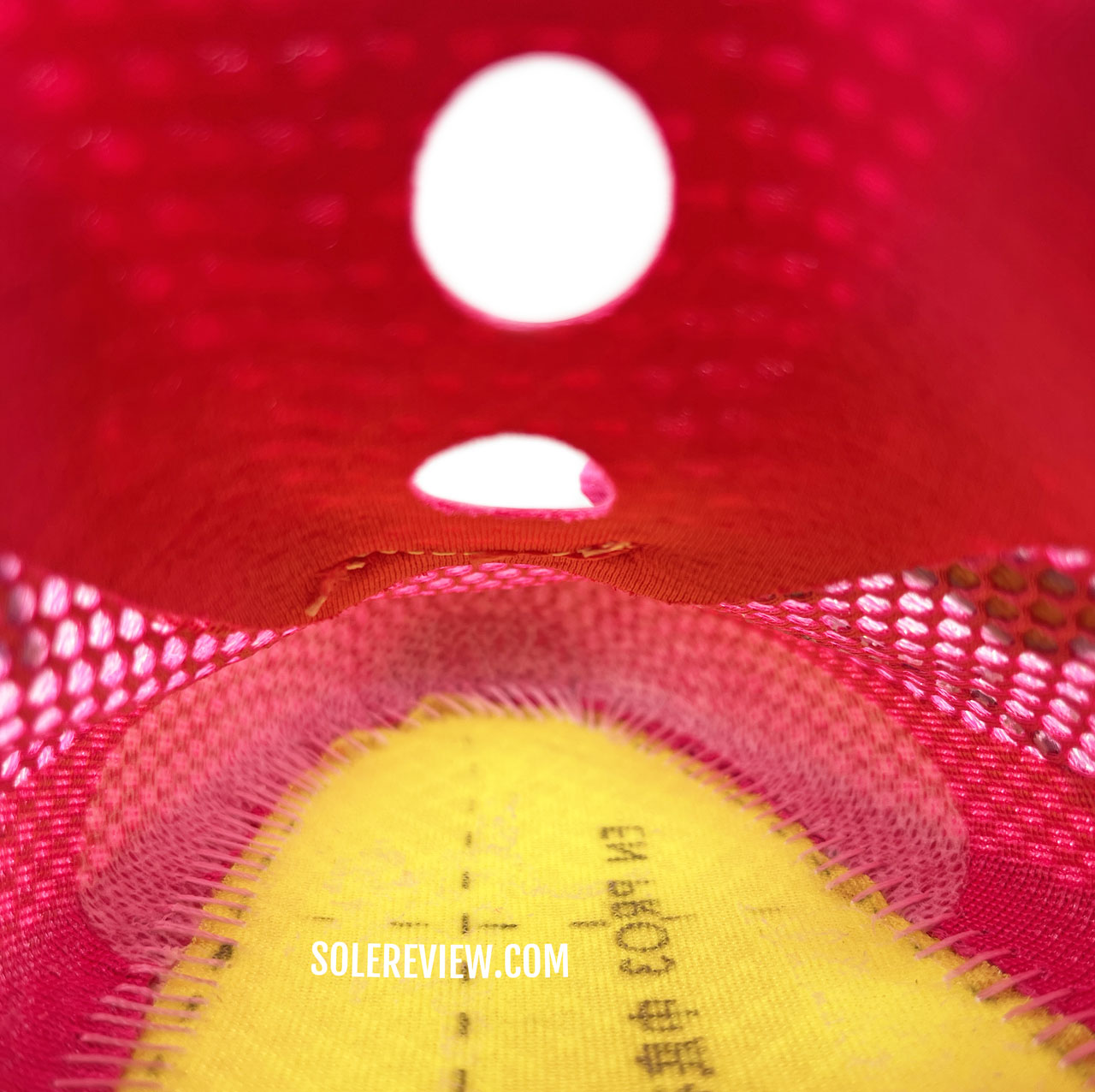
The large tongue vents of the Endorphin Pro 3 take ventilation to the max.
From a comfort and speed perspective, the Pro 3 is ideal for running marathons. The engaging PEBA foam midsole delivers responsive comfort for the duration of the marathon, whereas the Carbon plate acts as both the springboard (under the heel) and a rocker under the forefoot.
The result is an extremely comfortable marathon racer that’s also comfortable picking up speed when the occasion demands. Our comprehensive review of the Endorphin Pro 3 is here.
2) For sub-4:00 hour marathons: Nike Vaporfly 3
The original Vaporfly 4% was the running shoe that transitioned the racing shoe market from low-profile flats into the new world of Carbon plates and PEBA midsoles.
A ZoomX (PEBA foam) midsole of the VF 4% housed a Carbon plate that delivered the spring-like feel that we’ve all now come to appreciate.
Even with the extensive redesign, the V3 isn’t very different at a fundamental level. The lightweight, high-volume midsole acts as a deep cushioning reservoir that makes marathons less tiresome and more enjoyable – relatively speaking, of course.
The plate does what it does best – providing a satisfying rearfoot snap and swift forefoot transitions. This way, the Vaporfly 3 manages to blend highly responsive cushioning with a speed-friendly quality. This time, the plate is partially visible through the midsole and outsole cutouts.
Unfortunately, Nike alters the fundamentals of the upper fit. The Vaporfly 3’s upper has a lot more room than the Vaporfly 2, so the foot doesn’t feel securely locked down over the midsole. As explained in our detailed review, this negatively affects the transition quality.
3) For sub-4:00 hour marathons: Nike Zoom Fly 5
There are two reasons why the Carbon-plated Nike Zoom Fly 5 makes a compelling case as a marathon shoe.
The price is an obvious factor. The $160 sticker saves a lot of cash over $250-300 super-shoes; it even undercuts the Saucony Endorphin Speed 3 by $10.
The other reason why a marathoner should buy the Zoom Fly 5 is its high level of stability. The Zoom Fly 5 has a soft ZoomX core that is cased inside a wide midsole of a firmer density.
Not only that, but the midsole also has molded ‘scoops’ for structural support. The outsole rubber also covers a larger contact area.
Even the upper feels closer to a standard trainer. For example, both the heel and tongue are padded – a luxury that most marathon racers forego.
That way we see it, the Zoom Fly 5 offers the best of both worlds. The Carbon plate and ZoomX core deliver the speed-friendly cushioning comfort for a marathon, but with the reassuring stability of a traditional trainer. The pricing isn’t exorbitant either.
Just know that the Zoom Fly 5 behaves very differently than the Zoom Fly 4 – our in-depth review of the Zoom Fly 5 is here for you to read.
4) For over 4:00 hour marathons: Nike Invincible V3
Far too often, we get fixated on speed-friendly marathon racers. However, it’s worth keeping in mind that most people do not run 3:30 marathons, or even 4 hours.
The average time to finish a marathon is over 4 hours and 30 minutes, so the median will be even slower – which is 5 hours and longer.
Many runners just want to finish a marathon and enjoy the process without pushing their physical limits. In that case, you don’t need a fancy marathon racer with a Carbon plate, but something that’s sinfully cushioned – like the Nike Invincible 3. Our in-depth review explains what makes the Invincible 3 the last word in cushioning softness.
The Invincible 3 doesn’t pretend to be anything other than what is – an ultra-cushioned shoe that doesn’t care about its 11-ounce weight or voluminous midsole. The design updates on the 3 make it slightly firmer than the Invincible 2, but that’s purely in relative terms.
With so much foam under the foot, this is one shoe where the hyperbole ‘pillows taped to your feet’ does apply.
The soft and bouncy ZoomX midsole offers bottomless cushioning during a marathon. This is not a fast shoe, but covers all bases if you’re looking for the last word in ride comfort.
The thin and soft rubber outsole flexes together with the midsole to enhance the cushioning comfort without sacrificing road grip.
A comfortable midsole needs an upper to match, and Invincible 3 doesn’t disappoint. The mesh upper offers a true-to-size fit that accommodates changes in foot volume during a long run.
5) For over 3:00 hour marathons: Asics Superblast
Marathon shoe choices are (somewhat) binary. On one hand are Carbon-plated racers with a bouncy foam midsole. The Saucony Endorphin Pro and Nike Vaporfly come to mind.
And if you’re not hyper-obsessed with smashing personal bests, long-distance cruisers like the New Balance 1080V12 and Asics Nimbus 25 are great shoes to run a marathon in.
However, the Asics Superblast doesn’t fit into either category. The dual-density midsole uses Flytefoam Turbo – a lightweight foam that’s also used in the plated-equipped Metaspeed Sky.
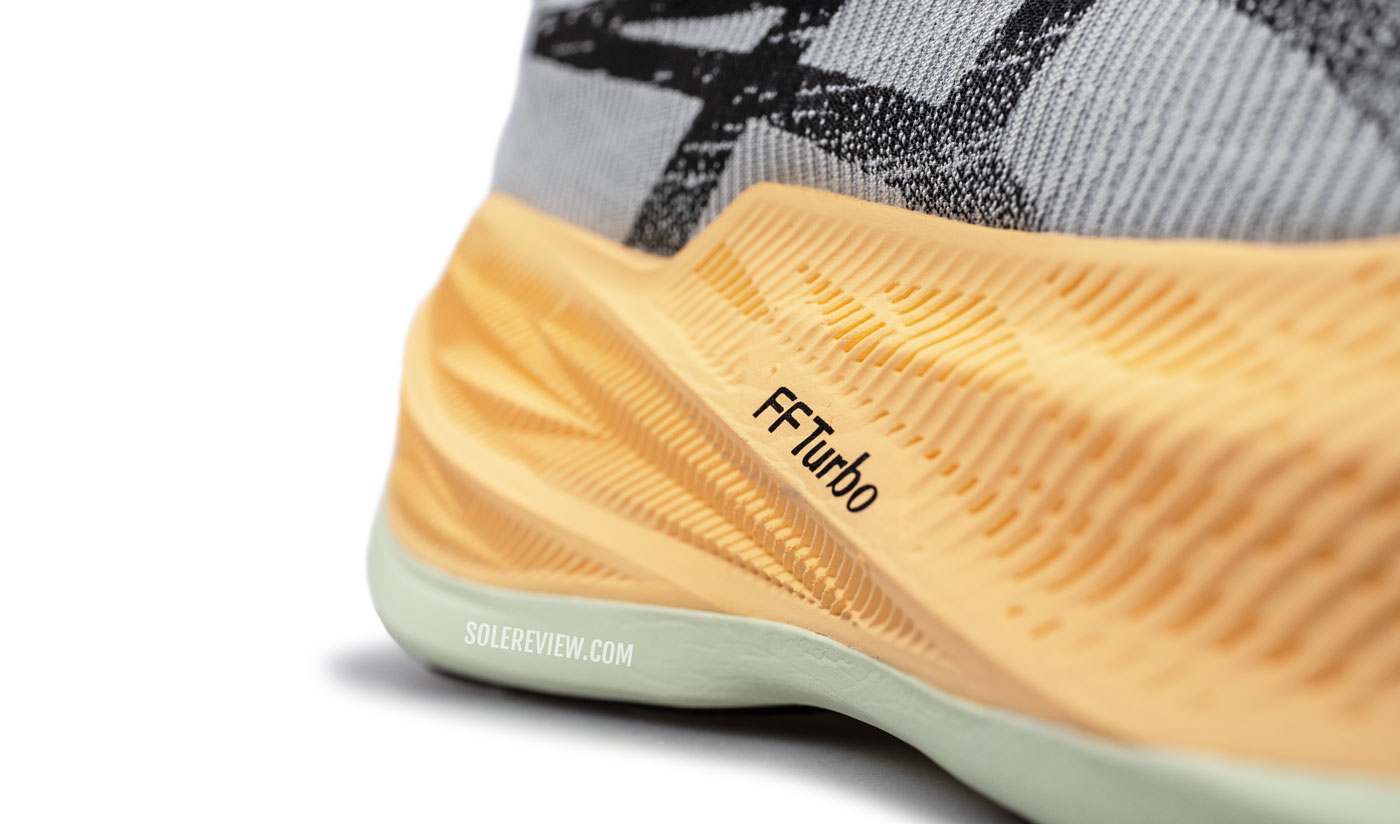
The Superblast is a souped-up version of the Novablast, and that makes a soft yet tempo-friendly shoe.
However, there’s no plate inside the Superblast. Despite that, the Superblast manages to produce a ride quality that’s quite capable of sustaining 3:30 min/km to 4:00 min/km (5:30 min/mile to 6:30 min/mile).
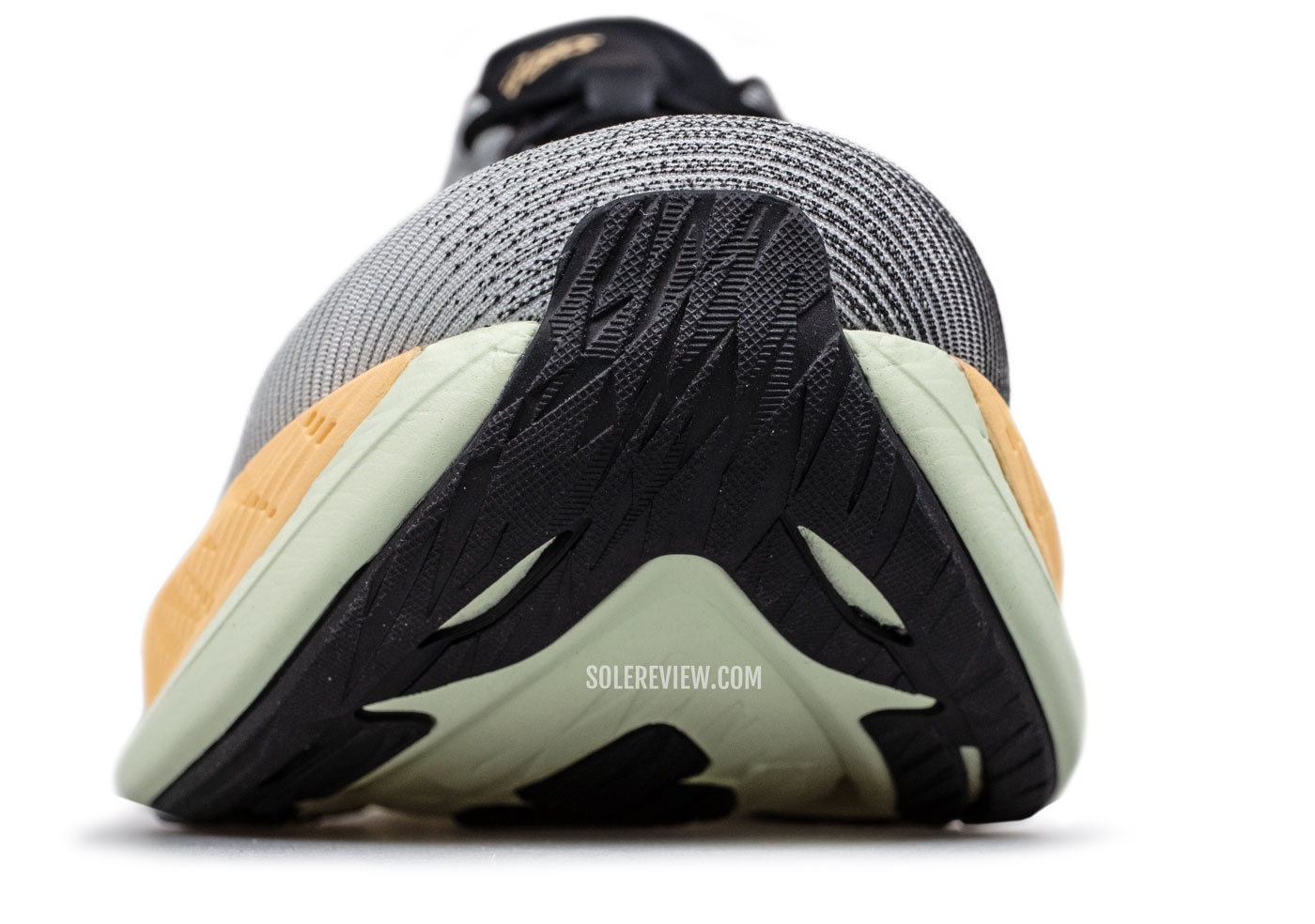
The rocker midsole helps the foot during the transition process. In short, this is a cushioned trainer that’s also capable of tempo runs.
The lightweight FF Turbo foam is quick to recover from the loading process, and the rocker midsole helps with speed-friendly transitions. The midsole is fairly wide and thick, so there’s no dearth of supportive cushioning. Our in-depth review is here.
The comfortable upper has a secure true-to-size fit, but without being overly narrow.
6) For over 3:30 hour marathons: New Balance Fresh Foam 1080V13
Despite all the new foams in the running shoe business, we believe that the Fresh Foam experience is (still) worth the price of admission.
The 1080V13’s EVA-blend midsole produces a smooth blend of cushioning, responsiveness, and transition-friendly manners. There’s sufficient cushioning available in this high-volume midsole for marathon distances, but without any speed-inhibiting mushiness.
The New Balance 1080V11 and V12 were somewhat similar; on the other hand, the V13 is a brand-new 1080 with significant updates. The cushioning is much softer, and the upper loses the stretch mesh from the 1080V12.
The ride is comfortable enough for marathon-level runs without feeling slow; the blown rubber outsole makes the transitions and landings smooth. The split outsole layout allows it to flex together with the soft foam stack.
The knit upper is narrower than before due to its non-elastic build, but without any compromise in fit security; the flared heel lip is easy on the Achilles tendon. Three other optional widths are available to accommodate wider or narrower feet.
The sleeved interiors are smooth and create a distraction-free fit experience.
Also consider: The Asics Nimbus 25 – a cushioned high-mileage cruiser with an increased appetite for speed. By completely redesigning their signature neutral trainer, Asics has polished the Nimbus 25’s ride manners in more ways than one.
7) For over 3:30 hour marathons: Hoka Clifton 9
The Hoka Clifton 9 doesn’t have a midsole plate, but it’s always been a popular choice for long runs and marathons – thanks to its cushioned ride and rockered geometry that allows for speed-friendly transitions. We wear-tested and reviewed the Clifton 9 here.
The EVA midsole lacks the pizzazz of lighter PEBA midsoles, but it still manages to hold out in a competitive market.
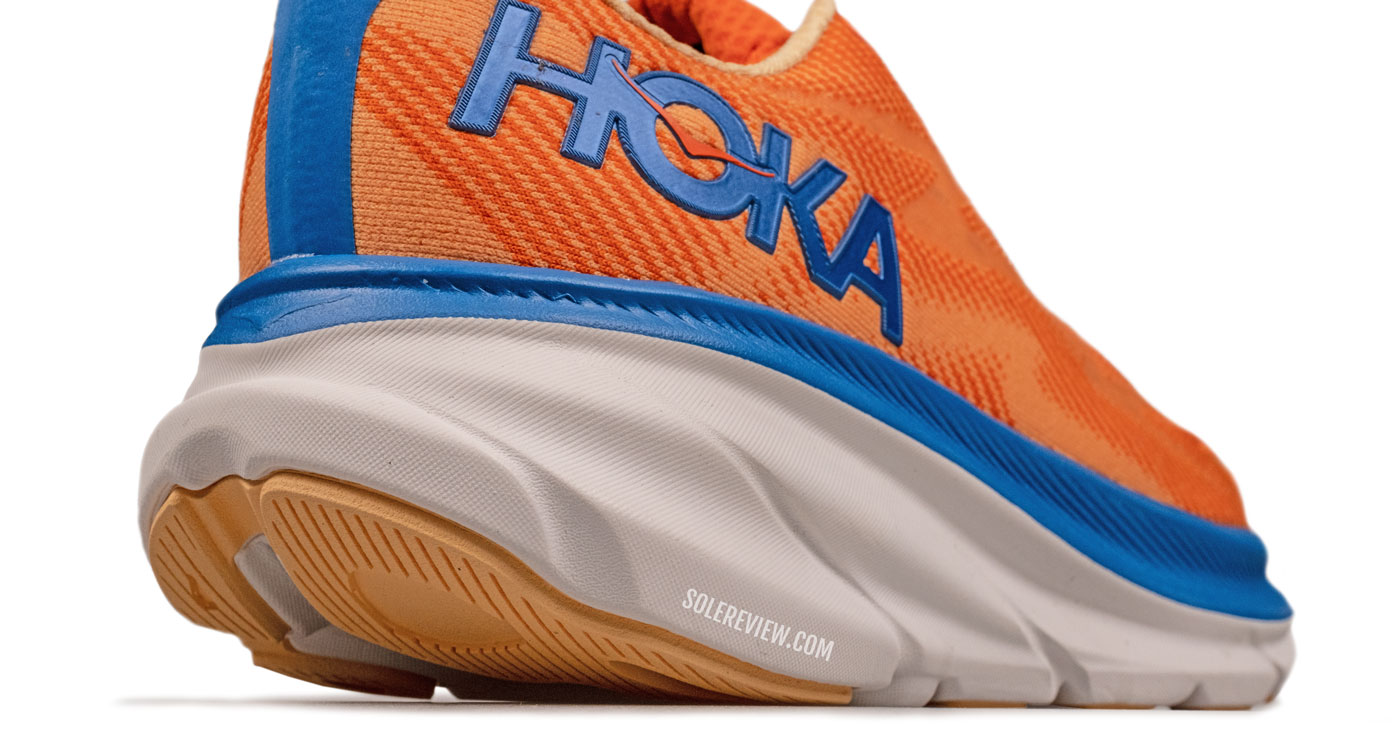
The Hoka Clifton is one of the original cushioned rocker trainers. This design gives the EVA midsole its tempo-friendly manners.
The thick forefoot has a high toe spring that allows the foot to roll over during the push-off stance; the resilience of the compression-molded midsole makes it easier to power through the gait cycle.
If the upper space – or the lack thereof – is a potential concern, the optional 2E width offers more space. The Hoka Clifton 9’s upper uses softer materials than the Clifton 8 for a higher level of interior comfort.
Also see: The Hoka Bondi 8 – it’s a more cushioned Clifton of sorts. Our review is here.
8) For over 3:30 hour marathons: Saucony Triumph 21
You should buy the Saucony Triumph 21 for the same reason(s) why people buy running shoes with adidas Boost foam midsoles.
Saucony’s Pwrrun+ midsole is made of the same material as the adidas Boost – an expanded Polyurethane foam that offers a well-balanced blend of cushioning comfort, durability, and support.
It’s also highly resistant to ambient temperature changes, meaning that the ride doesn’t get firmer during freezing winters.
The Triumph 21 only changes its upper over the 20. It has the same soft and responsive Pwrrun+ midsole that packs enough comfort for runs of double-digit distances, all while being responsive in its cushioning delivery. Here’s where you can read our in-depth review.
The upper is nice too – which isn’t surprising, as most Saucony shoes do well in that area. The engineered mesh exterior has a smooth fit, and the inner sleeve and lacing straps make the fit secure. Just know that the Triumph 21 has a full sleeve instead of the partial gusset that the
The interior comfort is excellent as well; the quilted heel collar is soft over the Achilles, and the padded tongue filters the lacing pressure.
Also see: The Brooks Glycerin 20 (Our review is here).
9) For over 2:45 hour marathons: Saucony Tempus
In the absence of a stability shoe with a medial post on this guide, the Saucony Tempus is the next best thing.
In our detailed review, we explained how the Tempus delivers its mileage-friendly cushioning without compromising stability.
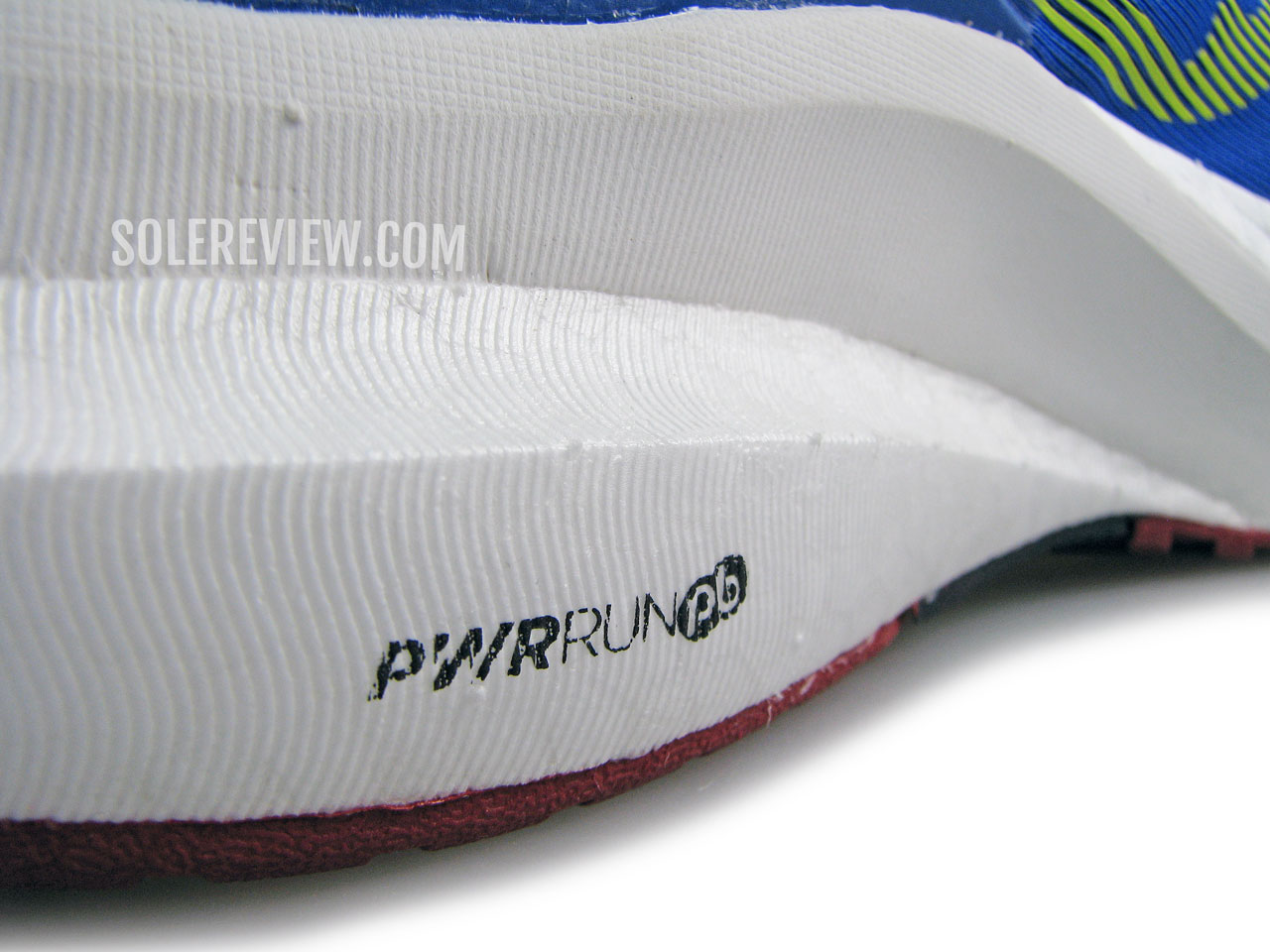
The Tempus combines an EVA frame with a softer Pwrrun PB core – the same material that’s used on the Endorphin Speed and Pro.
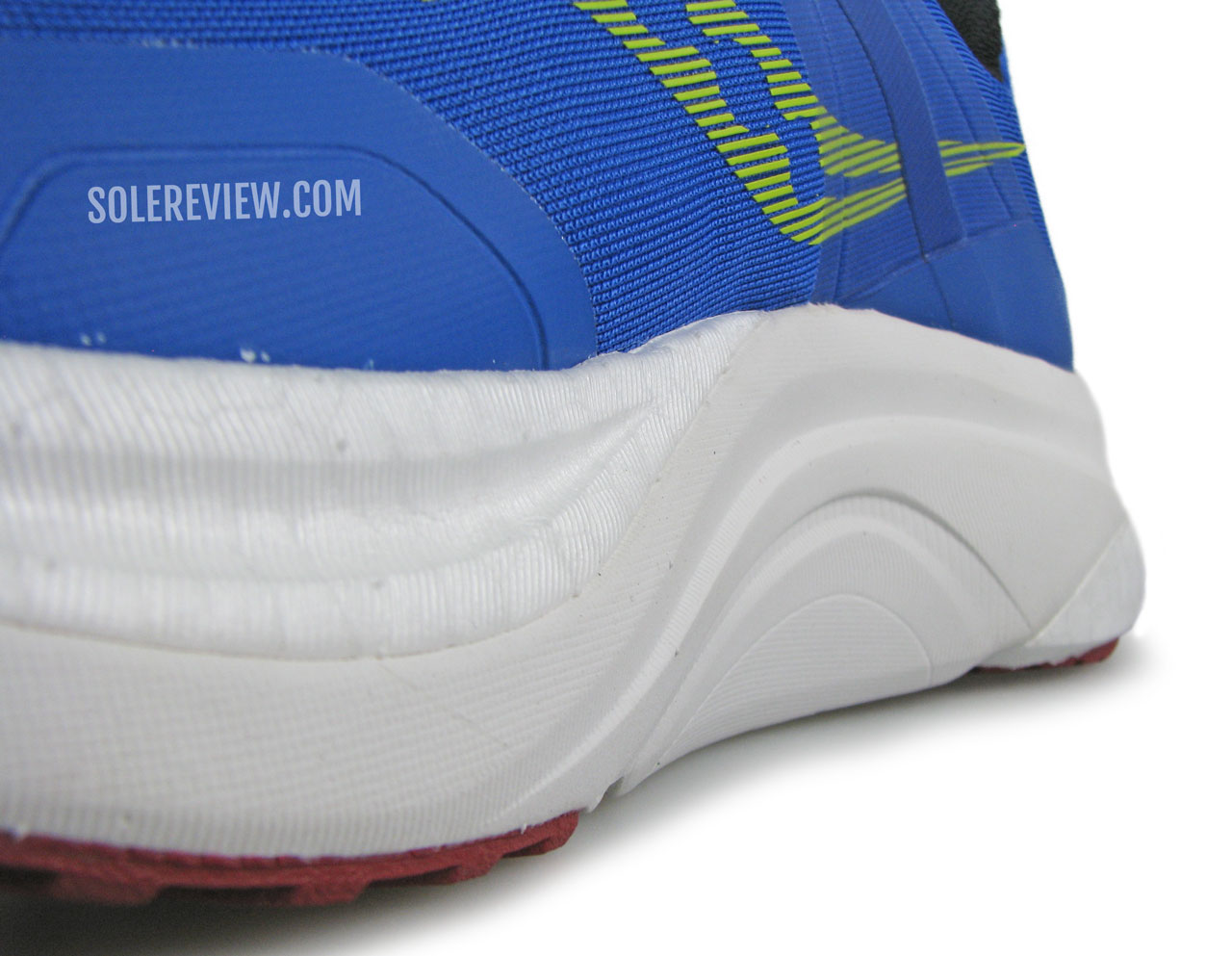
The inner side is supported with a solid EVA foam sidewall.
At its core is a Pwrrun PB midsole, the same foam that powers the Endorphin Speed and Pro 3. So it’s natural to expect a level of ride comfort that works for a marathon distance. And the Tempus doesn’t disappoint – the high level of cushioning makes long-distance runs easier on the feet.
However, it’s the second component that sets the Tempus apart from the rest. Wrapped around the softer foam core is a firmer – and more supportive – EVA foam rim.
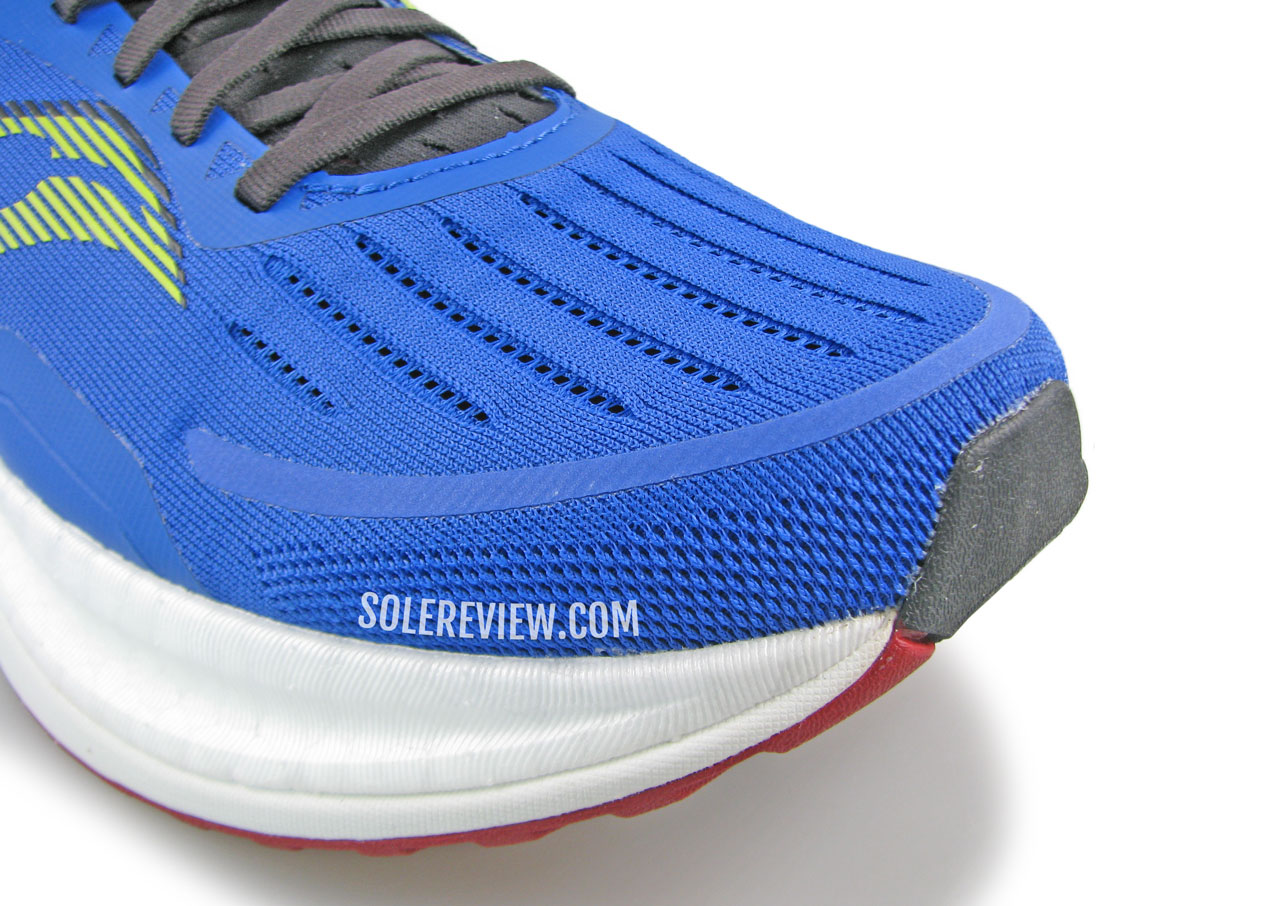
Saucony has been producing excellent uppers the last few years, and that continues with the Tempus.
While this design approach isn’t novel (adidas Sequence and Tempo Boost were the first to do it), it’s certainly a fresh take that uses contemporary materials and technology.
As with most Saucony running shoes, the soft and lightweight upper fits true to size and breathes well.
10) For over 3:30 hour marathons: Nike Pegasus 40
Let’s say you just have one versatile neutral trainer for your runs, and that shoe is the Nike Pegasus 40. And it’s an excellent choice, because the Peg is a great running shoe to do it all, including marathons. Our detailed review has more.
Sure, the Nike Pegasus 40 doesn’t have the engaging ride of PEBA foam-powered super shoes. That said, the React foam and Zoom Air bags inside the midsole make most runs comfortable and tempo-friendly.
The tightly-sprung Zoom Air bags add the transition-friendly snap for quicker turnovers. The Pegasus 40 is based on the same sole unit as the Pegasus 39, so you get the same familiar ride from the previous version.
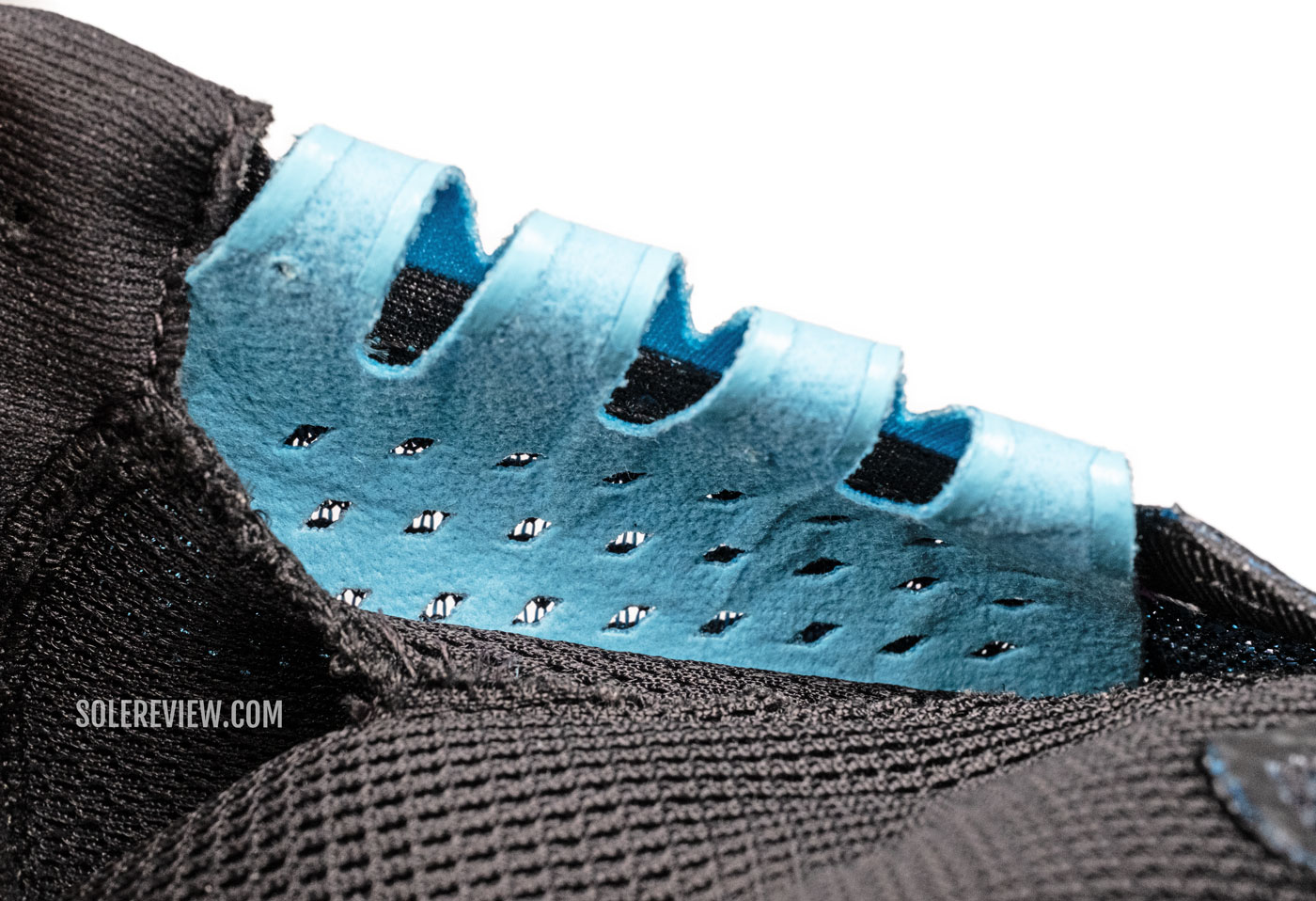
The lacing is linked to an internal midfoot strap system. The fit is more conforming and consistent than the 39. The synthetic suede panels are perforated for ventilation.
That being said, some refinements are made to the upper. The cord-assisted lacing has been replaced with a strapping system for a better lockdown. Other than that, the padded interiors create a secure and comfortable fit that’s true to size. The toe-box is accommodating, and the soft spacer mesh lining is a nice touch.
Do you own any of these shoes? Improve this review by sharing your insights – submit a review here.

